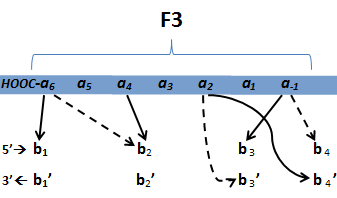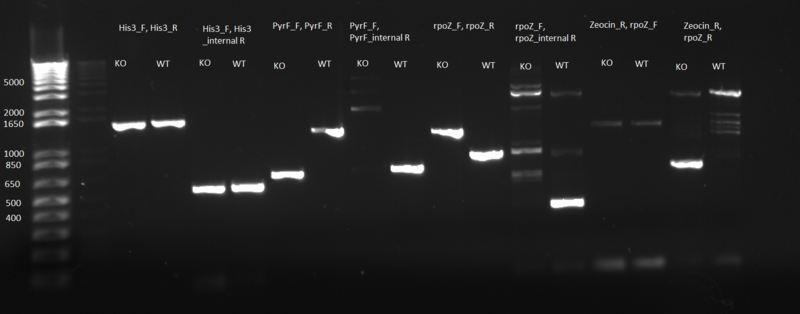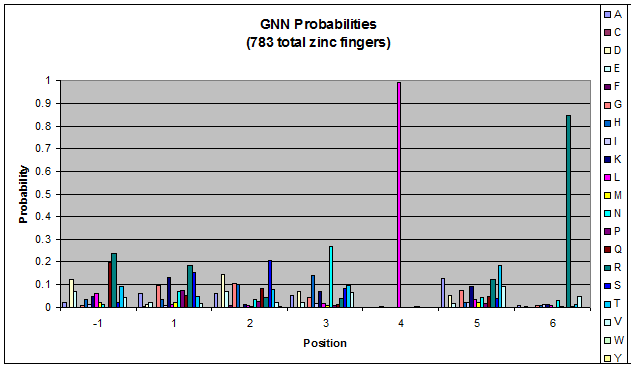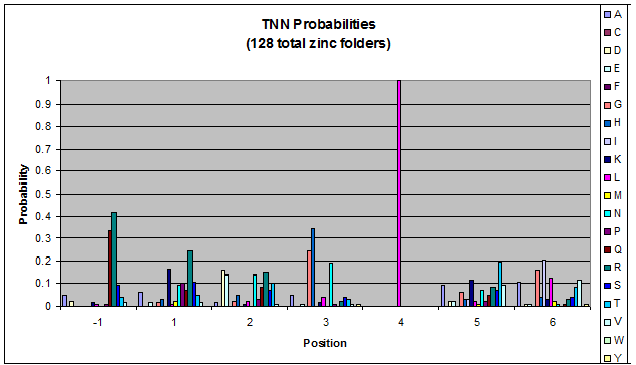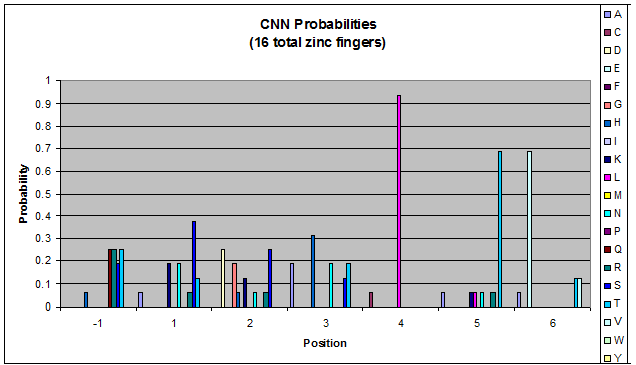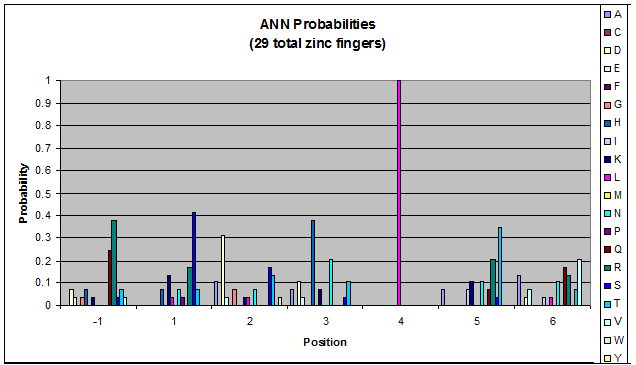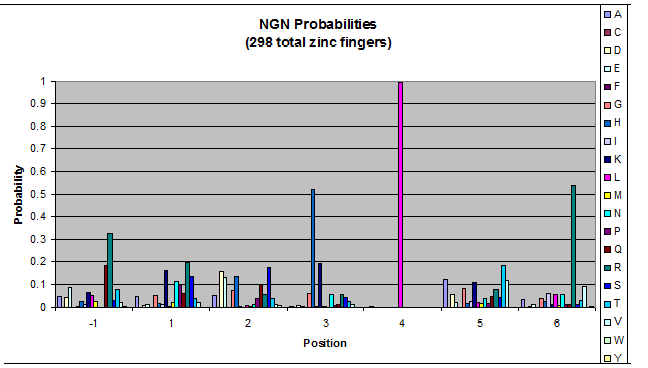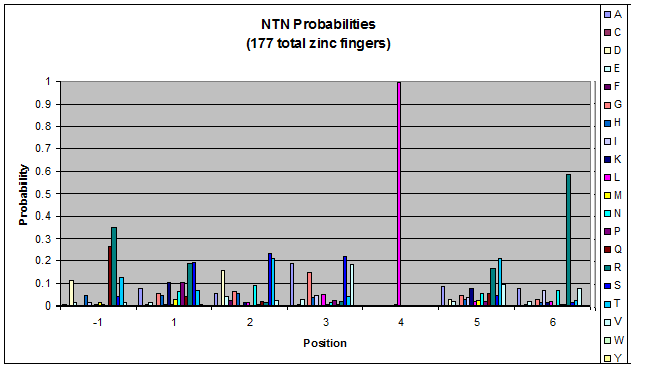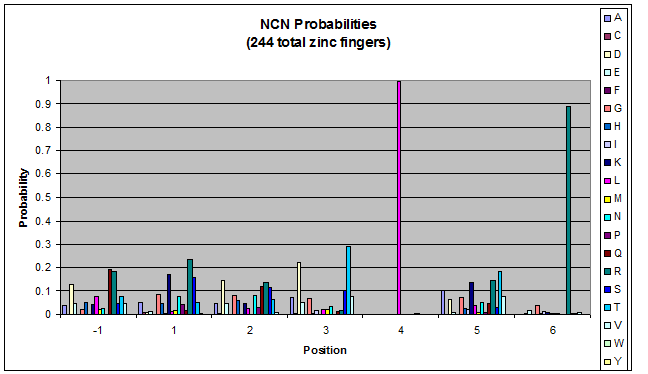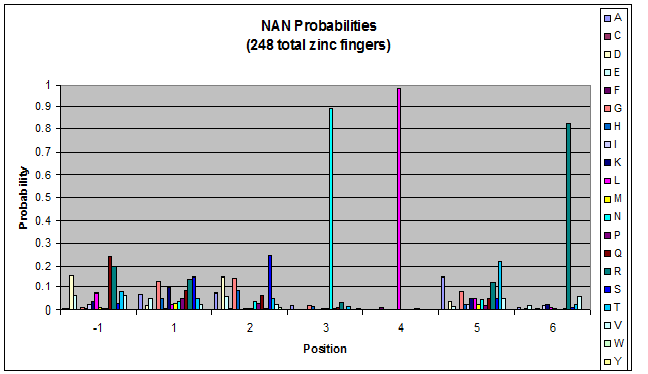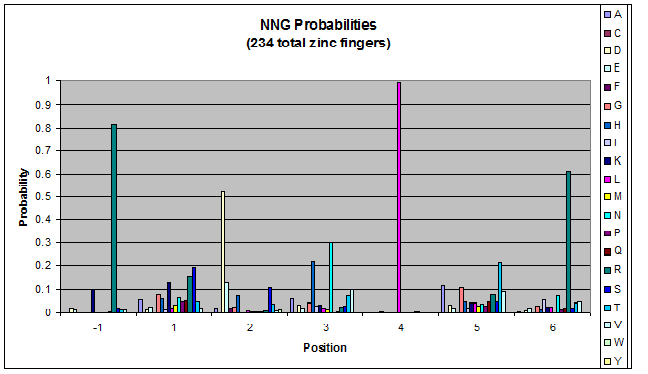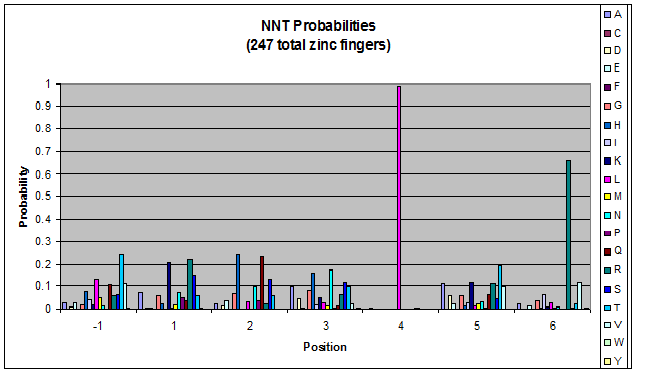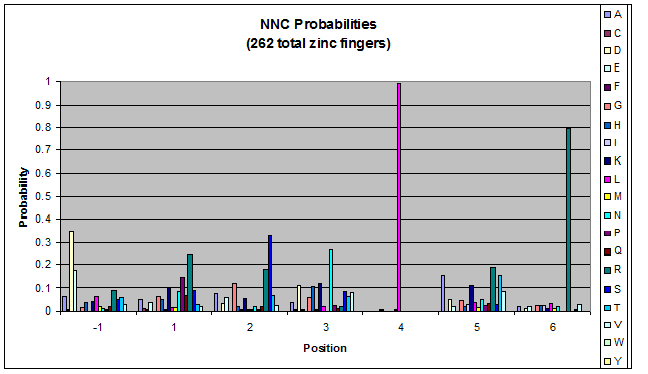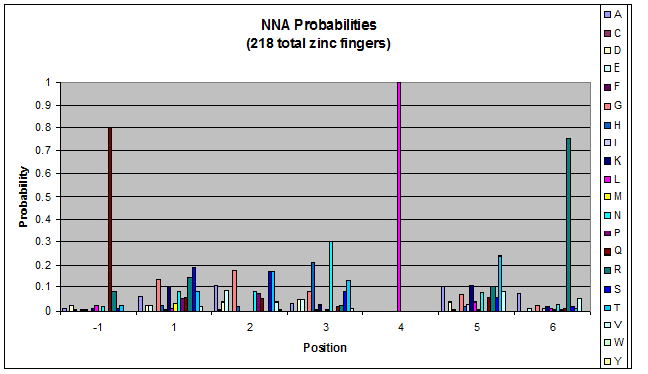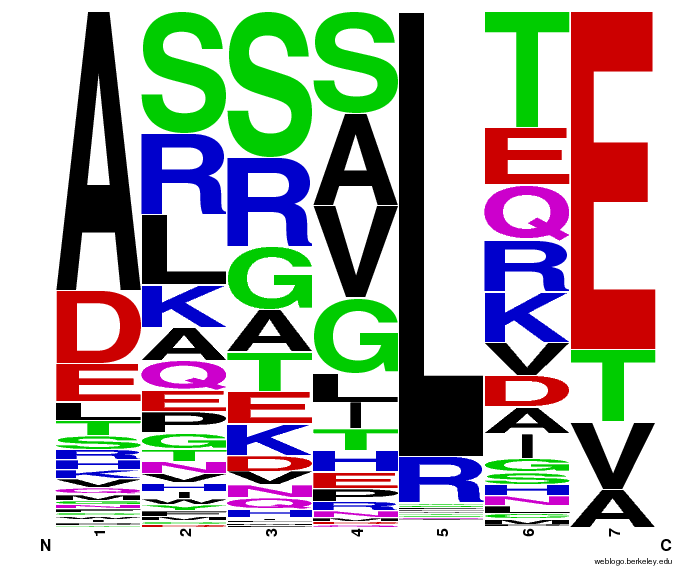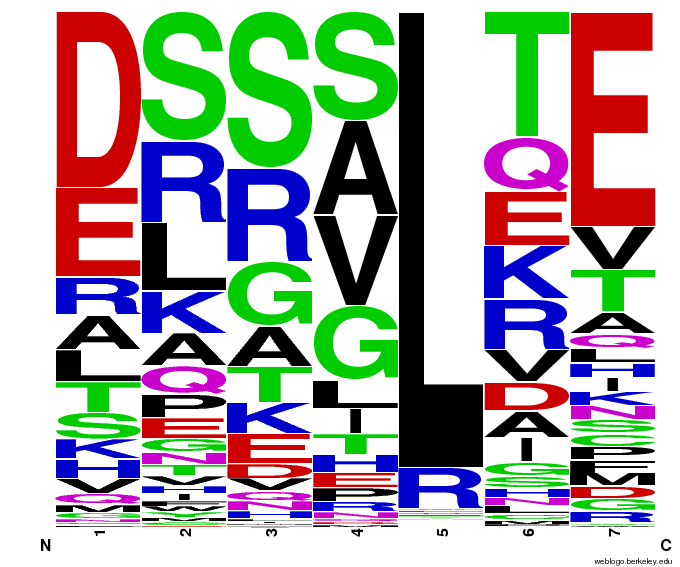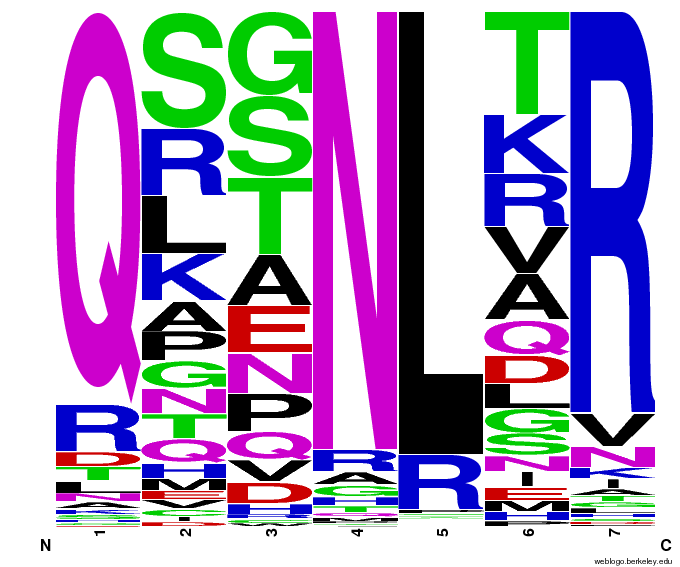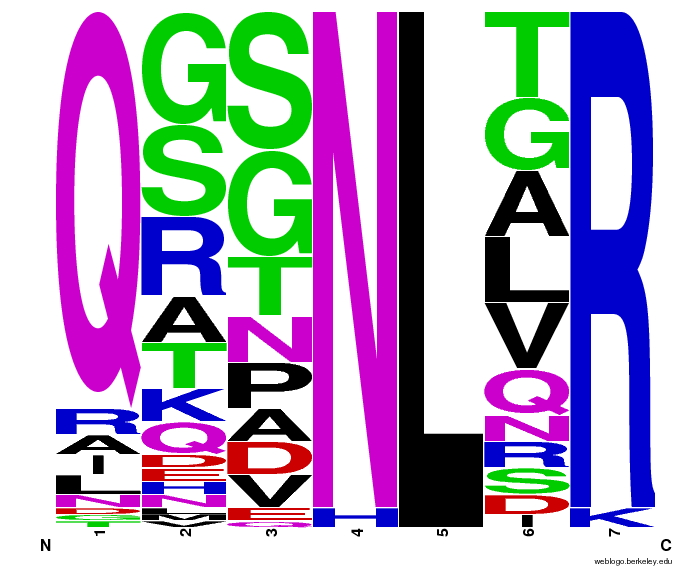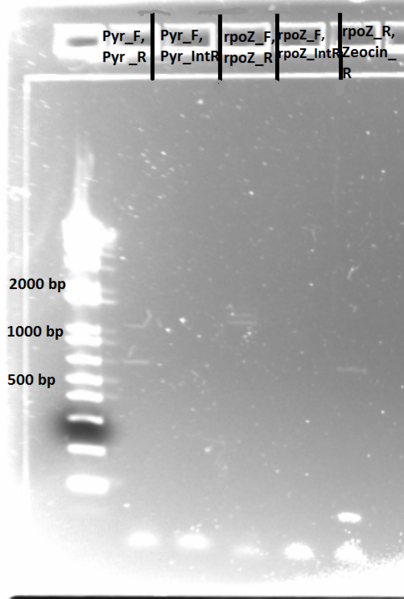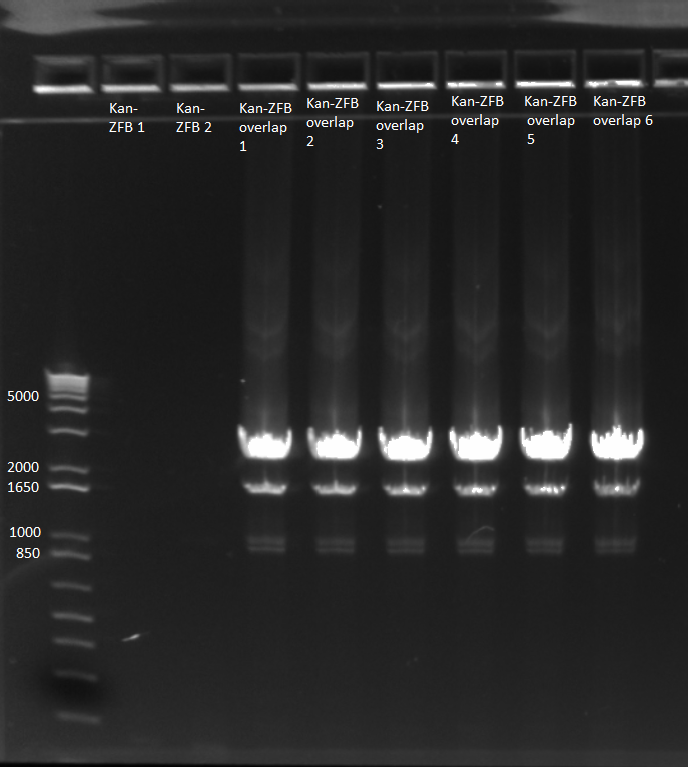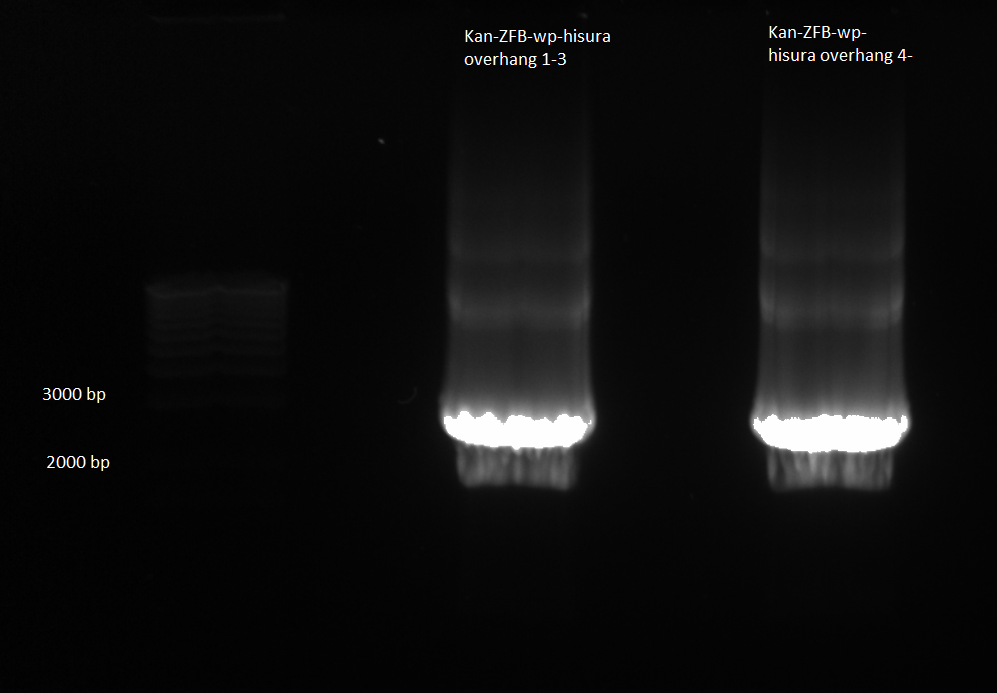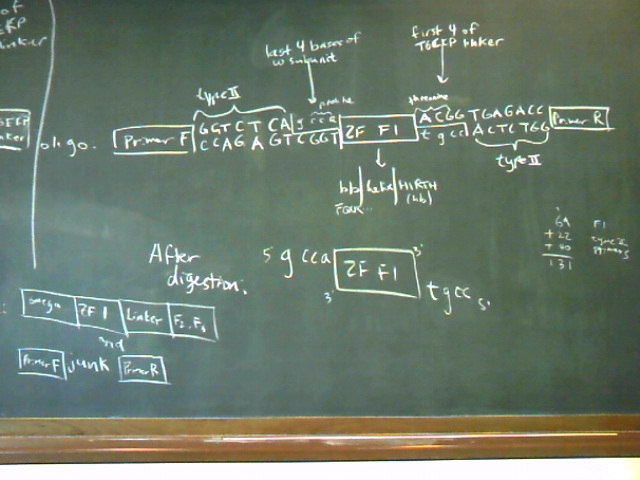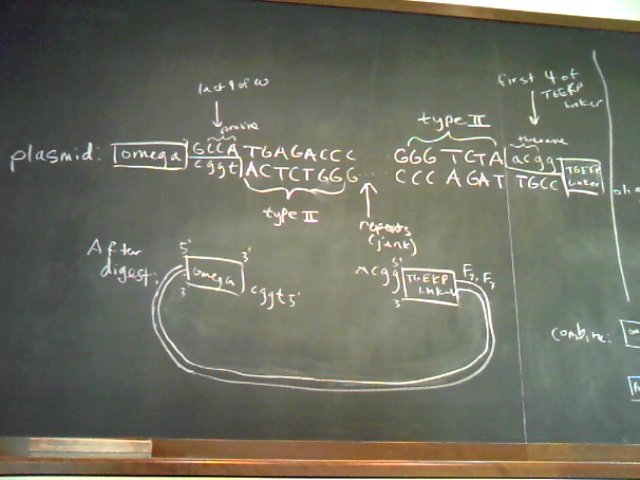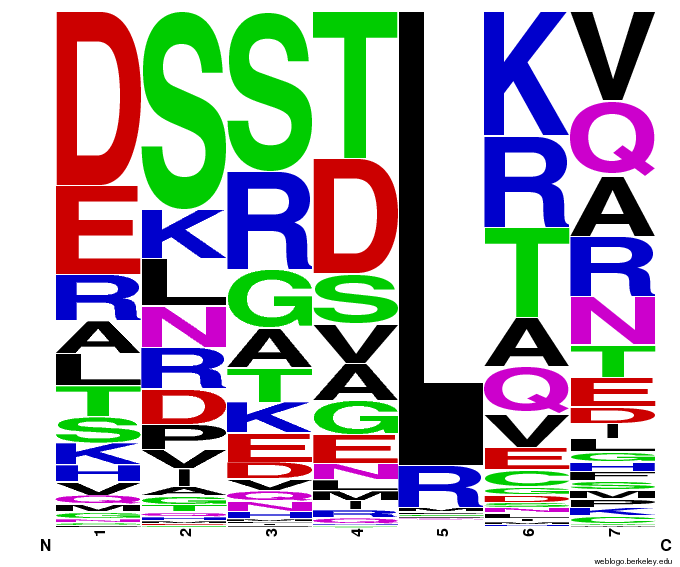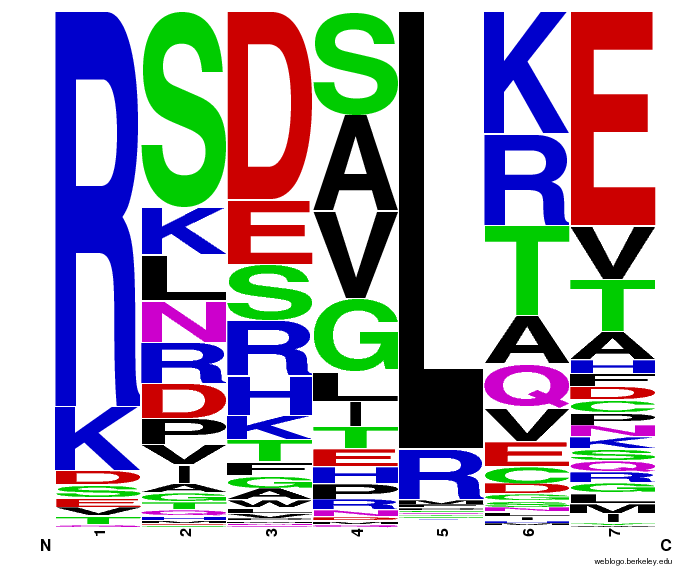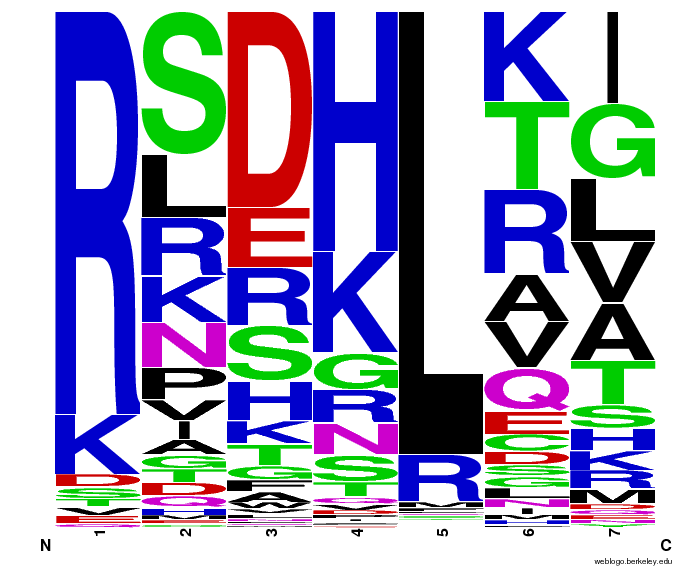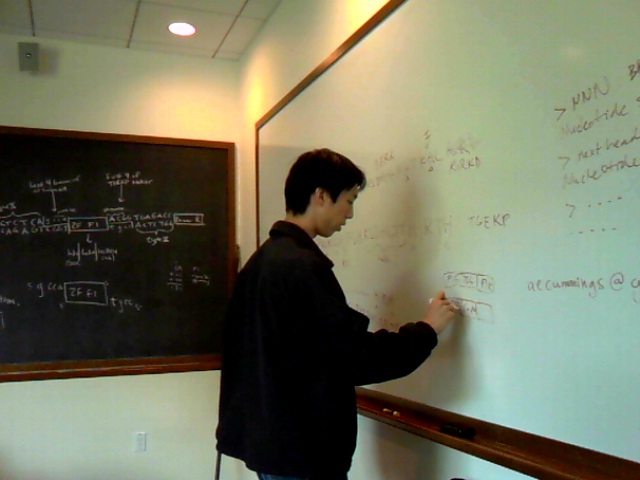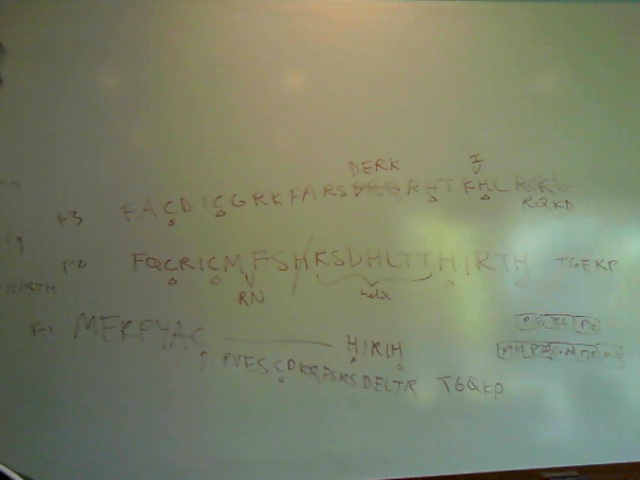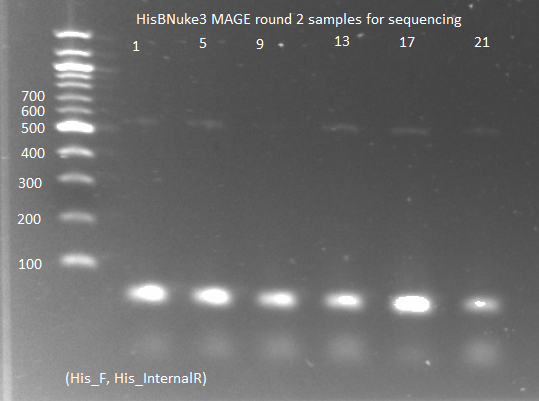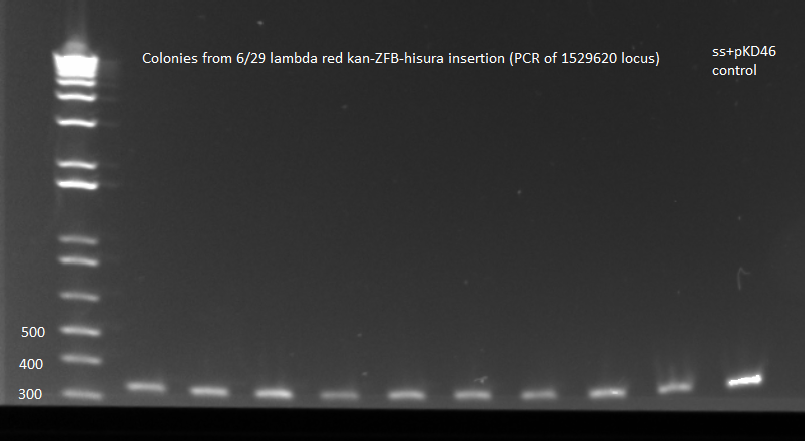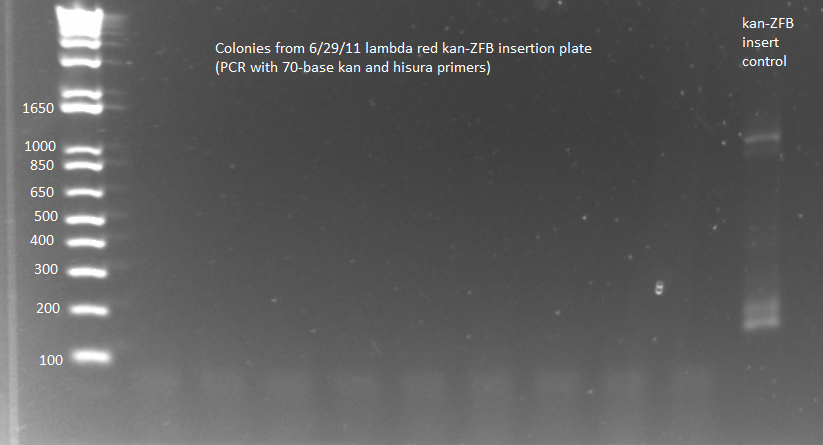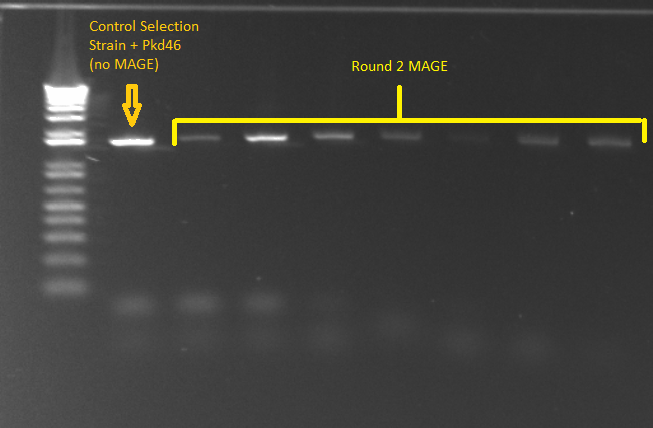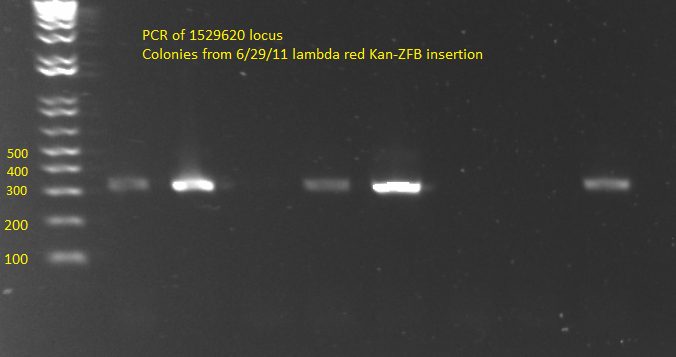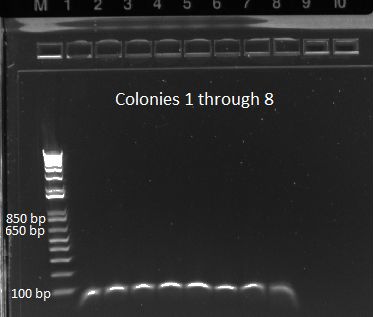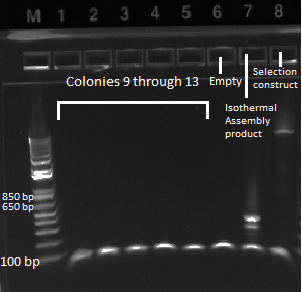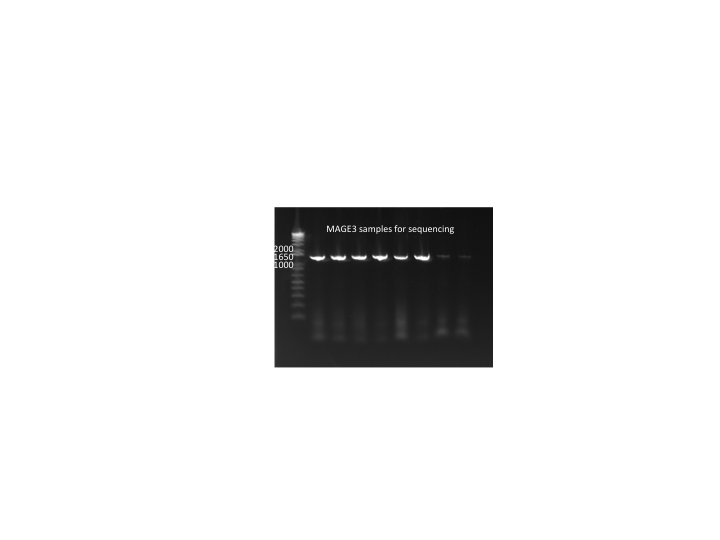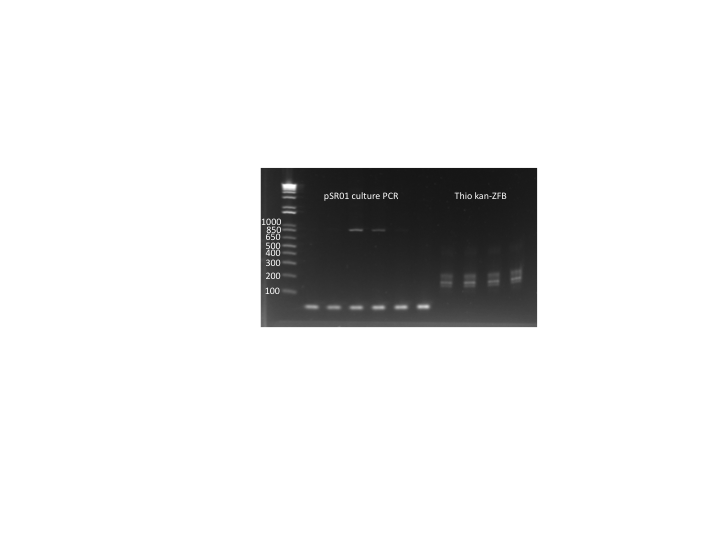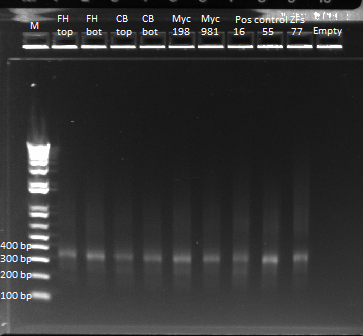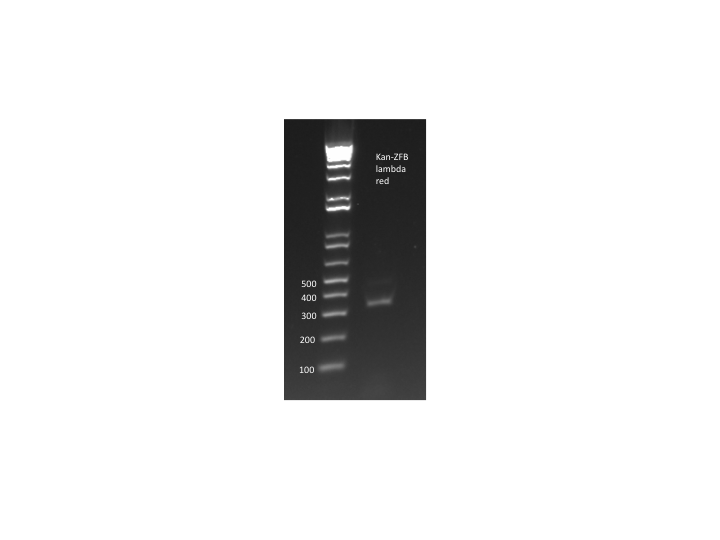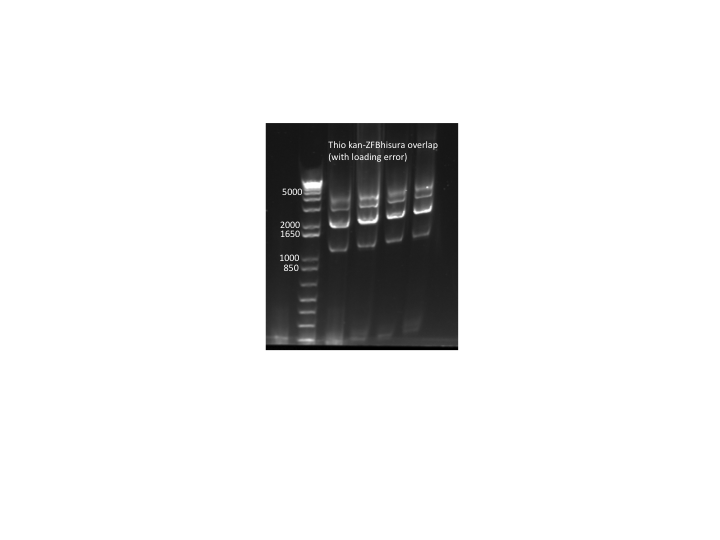Team:Harvard/Notebook
From 2011.igem.org
| Line 663: | Line 663: | ||
{{:Team:Harvard/Template:NotebookData4}} | {{:Team:Harvard/Template:NotebookData4}} | ||
{{:Team:Harvard/Template:NotebookDataJuly}} | {{:Team:Harvard/Template:NotebookDataJuly}} | ||
| + | {{:Team:Harvard/Template:NotebookDataJuly2}} | ||
Revision as of 23:59, 2 August 2011
| Sun | Mon | Tue | Wed | Thu | Fri | Sat |
|---|---|---|---|---|---|---|
| 1 | 2 | 3 | 4 | 5 | 6 | 7 | 8 | 9 | 10 | 11 |
| 12 | 13 | 14 | 15 | 16 | 17 | 18 |
| 19 | 20 | 21 | 22 | 23 | 24 | 25 |
| 26 | 27 | 28 | 29 | 30 |
| Sun | Mon | Tue | Wed | Thu | Fri | Sat |
|---|---|---|---|---|---|---|
| 1 | 2 | |||||
| 3 | 4 | 5 | 6 | 7 | 8 | 9 |
| 10 | 11 | 12 | 13 | 14 | 15 | 16 |
| 17 | 18 | 19 | 20 | 21 | 22 | 23 |
| 24 | 25 | 26 | 27 | 28 | 29 | 30 |
| 31 |
| Sun | Mon | Tue | Wed | Thu | Fri | Sat |
|---|---|---|---|---|---|---|
| 1 | 2 | 3 | 4 | 5 | 6 | |
| 7 | 8 | 9 | 10 | 11 | 12 | 13 |
| 14 | 15 | 16 | 17 | 18 | 19 | 20 |
| 21 | 22 | 23 | 25 | 25 | 26 | 27 |
| 28 | 29 | 30 | 31 |
June 6th
First day of iGEM!June 7th
Miniprep of pKD42 (lambda red)
The lambda red plasmid is needed to enable the recombination used to insert the selection/expression systems into our E. coli cultures.
Procedure: followed Qiagen Kit instructions, each student (8) using 1 mL cell suspension
Results: DNA reasonably pure (260/280 between 1.8 and 2) and between 25 and 50 ng/µLJune 8th
PCR to connect ultramers into OZ052 (Zif268 F2 triplicate, GCCGATGTC)and OZ123 (Zif268 F2 triplicate, GAGTGGTTA):
OZ052:
- 3µL OZ052_F (10µM stock)
- 3µL OZ052_R (10µM stock)
- 5µL 10x Pfx amplification buffer
- 1.5µL dNTPs
- 1µL MgSO4
- 0.4µL DNA polymerase
- 36.1µL ddH2O
OZ123:
- 3µL OZ123_F (10µM stock)
- 3µL OZ123_R (10µM stock)
- 5µL 10x Pfx amplification buffer
- 1.5µL dNTPs
- 1µL MgSO4
- 0.4µL DNA polymerase
- 36.1µL ddH2O
Parameters:
- 1) 94⁰C for 5 min
- 2) 94⁰C for 15 sec
- 3) 60⁰C for 30 sec
- 4) 68⁰C for 1 min
- 5) Repeat 2-4 for 25 cycles
- 6) 68⁰C for 5 min
- 7) 4⁰C forever
June 9th - Wet Lab
- Created cell culture with selection construct (contains ZFB, His3, pyrF on plasmid) and reporter RFP (this will be used to test positive control ZFs, cells fluoresce green when ZF binds)
- Picked colonies, grew in LB/amp liquid media until mid-log
- 3 mL of LB, 1.5 µL of 2000x amp
- Once mid-log reached, created glycerol stock, stored stock at -80⁰C.
300 µL bacteria, 1200 µL 80% glycerolThis should have been 1200 µL bacteria media, 300 µL 80% glycerol (Corrected 6/14/2011) (80% pure glycerol, 20% molecular grade water)
- Spiked new tubes of media with 25 µL bacteria from the mid-log tube to leave overnight
- Picked colonies, grew in LB/amp liquid media until mid-log
NOTE: reporter RFP did not grow to mid-log by end of day, will let grow overnight to saturation and continue creating glycerol stock tomorrow.
- Plated selection strain from gel stab onto tet plate.
- Began primer design for creating the kan/selection construct fusion.
June 9th - Bioinformatics
Today we focused on reacquainting and familiarizing ourselves with Python. We completed the parsing (reading in) of the sequence and amino acid data so that it is easy to work with: by substituting each amino acid abbreviation (ex. A, N) with its numeric equivalent (ex. 1, 14), we can use a lot of nice math comparisons instead of messy letter/"string" comparisons.
After that, we worked on counting the number of times each amino acid appears in each of the 7 positions (unfortunately given by -1,1,2,3,5,6,7), and counting the number of times amino acids are next to each other (ex. ACTQRNF has AC, CT, TQ, etc pairings). Taken overall, we found that L is overwhelmingly in position 5.
| Acid | -1 | 1 | 2 | 3 | 5 | 6 | 7 |
| A | 77 | 140 | 210 | 197 | 0 | 312 | 85 |
| C | 12 | 24 | 1 | 6 | 14 | 0 | 0 |
| D | 413 | 16 | 694 | 258 | 0 | 142 | 14 |
| E | 125 | 74 | 152 | 107 | 0 | 58 | 132 |
| F | 0 | 0 | 22 | 0 | 10 | 0 | 0 |
| G | 12 | 201 | 328 | 125 | 0 | 177 | 62 |
| H | 93 | 144 | 232 | 652 | 0 | 51 | 17 |
| I | 70 | 21 | 3 | 26 | 0 | 94 | 73 |
| K | 108 | 372 | 46 | 169 | 6 | 321 | 52 |
| L | 176 | 37 | 20 | 22 | 3325 | 75 | 55 |
| M | 36 | 54 | 5 | 28 | 0 | 31 | 10 |
| N | 23 | 150 | 129 | 940 | 0 | 182 | 61 |
| P | 3 | 298 | 77 | 7 | 0 | 36 | 8 |
| Q | 813 | 158 | 180 | 13 | 0 | 136 | 30 |
| R | 870 | 539 | 137 | 55 | 3 | 428 | 2517 |
| S | 99 | 970 | 859 | 278 | 0 | 140 | 12 |
| T | 243 | 134 | 223 | 350 | 0 | 834 | 83 |
| V | 166 | 26 | 27 | 115 | 0 | 341 | 146 |
| W | 19 | 0 | 13 | 0 | 0 | 0 | 0 |
| Y | 0 | 0 | 0 | 10 | 0 | 0 | 1 |
For pairings, we found patterns, but none as obvious as the L-in-position-5. Read this like a multiplication table: the intersection of L row and M column is how often that pairing was observed.
| ' | A | C | D | E | F | G | H | I | K | L | M | N | P | Q | R | S | T | V | W | Y |
| A | 10 | 0 | 99 | 55 | 0 | 29 | 122 | 20 | 32 | 332 | 2 | 59 | 55 | 63 | 255 | 87 | 24 | 43 | 0 | 0 |
| C | 0 | 0 | 15 | 0 | 0 | 3 | 0 | 0 | 0 | 5 | 0 | 0 | 6 | 0 | 31 | 6 | 14 | 0 | 0 | 0 |
| D | 99 | 15 | 94 | 92 | 0 | 39 | 62 | 6 | 84 | 342 | 15 | 120 | 55 | 42 | 277 | 290 | 87 | 21 | 0 | 8 |
| E | 55 | 0 | 92 | 42 | 0 | 34 | 77 | 1 | 38 | 141 | 2 | 39 | 4 | 29 | 134 | 28 | 90 | 26 | 0 | 1 |
| F | 0 | 0 | 0 | 0 | 0 | 0 | 0 | 10 | 0 | 0 | 0 | 22 | 4 | 0 | 2 | 4 | 6 | 0 | 0 | 0 |
| G | 29 | 3 | 39 | 34 | 0 | 38 | 56 | 0 | 14 | 126 | 1 | 95 | 28 | 47 | 119 | 125 | 38 | 7 | 0 | 0 |
| H | 122 | 0 | 62 | 77 | 0 | 56 | 118 | 9 | 103 | 498 | 4 | 88 | 24 | 26 | 87 | 159 | 70 | 2 | 0 | 0 |
| I | 20 | 0 | 6 | 1 | 10 | 0 | 9 | 6 | 8 | 95 | 3 | 5 | 17 | 3 | 62 | 16 | 17 | 4 | 0 | 0 |
| K | 32 | 0 | 84 | 38 | 0 | 14 | 103 | 8 | 84 | 386 | 24 | 44 | 19 | 102 | 269 | 163 | 113 | 22 | 1 | 0 |
| L | 332 | 5 | 342 | 141 | 0 | 126 | 498 | 95 | 386 | 174 | 32 | 686 | 16 | 112 | 362 | 276 | 875 | 360 | 0 | 8 |
| M | 2 | 0 | 15 | 2 | 0 | 1 | 4 | 3 | 24 | 32 | 0 | 7 | 2 | 11 | 39 | 14 | 3 | 1 | 0 | 0 |
| N | 59 | 0 | 120 | 39 | 22 | 95 | 88 | 5 | 44 | 686 | 7 | 8 | 36 | 28 | 120 | 254 | 84 | 34 | 1 | 0 |
| P | 55 | 6 | 55 | 4 | 4 | 28 | 24 | 17 | 19 | 16 | 2 | 36 | 0 | 3 | 29 | 150 | 21 | 13 | 11 | 0 |
| Q | 63 | 0 | 42 | 29 | 0 | 47 | 26 | 3 | 102 | 112 | 11 | 28 | 3 | 100 | 261 | 314 | 125 | 19 | 0 | 0 |
| R | 255 | 31 | 277 | 134 | 2 | 119 | 87 | 62 | 269 | 362 | 39 | 120 | 29 | 261 | 618 | 343 | 504 | 281 | 0 | 0 |
| S | 87 | 6 | 290 | 28 | 4 | 125 | 159 | 16 | 163 | 276 | 14 | 254 | 150 | 314 | 343 | 592 | 173 | 91 | 0 | 0 |
| T | 24 | 14 | 87 | 90 | 6 | 38 | 70 | 17 | 113 | 875 | 3 | 84 | 21 | 125 | 504 | 173 | 154 | 28 | 0 | 0 |
| V | 43 | 0 | 21 | 26 | 0 | 7 | 2 | 4 | 22 | 360 | 1 | 34 | 13 | 19 | 281 | 91 | 28 | 12 | 0 | 0 |
| W | 0 | 0 | 0 | 0 | 0 | 0 | 0 | 0 | 1 | 0 | 0 | 1 | 11 | 0 | 0 | 0 | 0 | 0 | 0 | 0 |
| Y | 0 | 0 | 8 | 1 | 0 | 0 | 0 | 0 | 0 | 8 | 0 | 0 | 0 | 0 | 0 | 0 | 0 | 0 | 0 | 0 |
June 10th - Wet Lab
- What we learned today: don't put E. coli plates in the -20C freezer!
- Observed a well populated selection strain plate and placed it in the 4C refrigerator
- Took the selection construct culture and extracted the plasmid through miniprep
- Observed 260/280 ratio of 1.90 and 1.88 through Nanodrop
- Observed concentrations of 87.7 and 100.6 ng/µL through Nanodrop
- Made 10 new agar plates with LB and amp
June 10th - Bioinformatics
Visualizations
We spent the first few hours today making cool visualizations and graphs of the data we found on the 9th: heatmaps turned out to be an annoying limitation of Python, so a Python/R hybrid was used, and bar charts were made exclusively in Python. See the dropbox for our pretty (and hopefully informative compared to spreadsheets) charts/graphs.
We then started work on TNN and GNN properties specifically (essentially repeating the June 9th work, but confined to smaller data sets). There are some differences between TNN and GNN: see graphs in dropbox. We decided that there was not enough data for fingers that bind to ANN and CNN triplets to perform significant analysis on it.
- Overall, similar color clusters are found in the heatmaps. In all cases, L and N are often placed consecutively on the helix. There are fewer clusters of high frequency when looking at TNN binders.
We then, using the theorized framework from a paper (2011 Persikov [http://iopscience.iop.org.ezp-prod1.hul.harvard.edu/1478-3975/8/3/035010/]), tried to match amino acid binding to each base pair to see if there was a pattern. See dropbox document .../bioinformatics/Binding Frequency for that data. There's a lot of it.
Properties of amino acids
We then worked on finding properties of the each position (hydrophobic/phillic, non/polar):
Hydrophilic vs Hydrophobic
| Position | Very Phobic | Hydrophobic | Neutral | Hydrophillic |
| 6 | 285 | 85 | 204 | 2782 |
| 5 | 542 | 312 | 1334 | 1169 |
| 4 | 3334 | 14 | 0 | 9 |
| 3 | 191 | 203 | 1417 | 1536 |
| 2 | 91 | 211 | 1819 | 1236 |
| 1 | 138 | 164 | 1604 | 1451 |
| -1 | 468 | 90 | 1257 | 1542 |
Polar vs Nonpolar
| Position | Polar | Nonpolar |
| 6 | 2917 | 440 |
| 5 | 2290 | 1067 |
| 4 | 9 | 3348 |
| 3 | 2830 | 527 |
| 2 | 2652 | 705 |
| 1 | 2555 | 802 |
| -1 | 2784 | 573 |
June 13th - Wet Lab
The control zinc fingers OZ052 and OZ123 were amplified with overhanging primers to allow its insertion into the Wolfe plasmid:
Overhang PCR for ultramers: the template was the product of the ultramer PCR (see 6/8/11), and several concentrations were used
In all the tubes:
- 5 µL Pfx amplification buffer
- 1.5 µL dNTPs
- 1 µL MgSO4
- 0.4 µL polymerase
- 38.1 µL ddH2O
- 1.5 µL OZ052_up and 1.5 µL OZ052_down OR 1.5 µL OZ123_up and 1.5 µL OZ123_down
In OZ052 (1) and OZ123 (1):
- 1 µL of ultramer PCR product
In OZ052 (1:10) and OZ123 (1:10):
- 1 µL of a 1 in 10 dilution of ultramer PCR product
In OZ052 (1:100) and OZ123 (1:100):
- 1 µL of a 1 in 100 dilution of ultramer PCR product
Parameters:
- 94⁰C for 5 min
- 94⁰C for 15 sec
- 55⁰C for 30 sec
- 68⁰C for 30 sec
- Repeat steps 2-4 for 25 cycles
- 68⁰C for 5 min
- 4⁰C forever
Gel to verify proper amplification (1% agarose gel, 10 µL 1 kb ladder, 120 V):
The OZ052 lanes (1-3) had bands at the proper length (328 bp) at all three concentrations, although there were several fainter bands likely from side products. Only the undiluted OZ123 lane showed any bands, and from the faint band at 328 and the stronger band around 250 it appears that the PCR did not work well, and the majority of the product was the ultramer from the first PCR.
PCR around vector: the template used was the Wolfe selection construct plasmid miniprepped 6/10/11 (100.6 ng/µL stock)
Reagents the same as above except:
- 1.5 µL of Wolfe_F and 1.5 µL of Wolfe_R primers to each tube
- plasmid tube (1 ng) given 1 ng of template (1 µL of a 1 in 100 dilution)
- plasmid tube (10 ng) given 10 ng of template (1 µL of a 1 in 10 dilution)
Parameters same as above except:
- elongation (step 4) 5 minutes (vector approximately 5 kb)
Gel to verify proper amplification (1% agarose, 10 µL 1 kb ladder, 170V)
There were no bands of the correct size in the lanes. The only band that appeared was a faint, short band in one lane that likely was a primer. Since the DNA ladder worked, the problem likely was not with the electrophoresis but with the PCR reaction, perhaps due to issues with the primers.
Gel images
June 13th - Bioinformatics
Today we started work on a program to statistically generate possible sequences.
The four functions needed to do this are:
- generate(matrix, pseudocounts (lambda), dependency tuples)
- takes a matrix of zinc-finger AA position counts, a list of dependent amino acid pairs, and a pseudocount multiplier and generates a list of potential amino acid sequences weighted by independent and dependent probabilities
- add_pseudo(dependent matrix row,independent matrix row)
- given a matrix row of dependent counts (i.e. how many times 'a' occurs at position n when 'b' is set to some AA at position m) and a row of independent matrix counts (how many times 'a' occurs at n regardless of b's AA) return an adjusted matrix row, based on the dependent matrix row, that has pseudocounts added to the values that are empty in the dependent matrix row but filled in the independent matrix row.
- generate_indep(matrix)
- randomly pick an amino acid, given a matrix row, from a weighted random distribution based on the values in the row
- generate_dep(indep_row, dep_row, lambda)
- add pseudo counts (call add_pseudo) and generate a dependent random call for a position (using generate_indep on the adjusted matrix)
June 14
Wet Lab
- Made four LB-based media solutions, and later created glycerol stocks from these and placed in -80⁰C freezer
- Selection strain (ΔHis3ΔPyrFΔrpoZ) in 3 mL LB and 3µL of 1000x Tet solution stock
- Selection strain (ΔHis3ΔPyrFΔrpoZ) in 3 mL of LB only solution stock (control)
- Kan cassette (pZE22G) in 3 mL of LB solution stock and 3 µL of kanamycin solution stock
- Lambda Red (pKD42) in 3 mL of LB and 3 µL Amp solution stock
- For all of these stocks, we tried to grow all to mid-log and then place them in 1,200 µL of culture and 300 µL of 80 % glycerol solution (This is the correct protocol for creating a glycerol stock; refer to June 9th)
- We were only able to get the kan cassette to mid-log and created glycerol stock of the kan cassette
- Observations included contamination of a pKD46 liquid culture, and we are leaving Lambda Red and both solutions with the selection strain for overnight growth
- Ran 1% gel (150V) with the rest of the OZ123 and OZ052 overhang PCR samples
- Used better ladder today, less the 1 kb ladder
- Bands followed the same pattern as the gel run on 6/13/11
- Used gel extraction to obtain the correct OZ123 and OZ052 PCR product from the gel
- Used Qiagen quick gel extraction kit
- OZ052 (from undiluted lane): 7.0 ng/µL, 260/280=2.42 (Note: this sample had a strange yellow substance in the column, may have been contaminated)
- OZ052 (from undiluted lane): 12.0 ng/µL, 260/280=2.02
- OZ052 (from 1:10 dilution): 10.8 ng/µL, 260/280=2.04
- OZ052 (from 1:10 dilution): 15.2 ng/µL, 260/280=1.82
- OZ052 (from 1:100 dilution): 20.6 ng/µL, 260/280=2.17
- OZ123 (from undiluted lane): 6.3 ng/µL, 260/280=2.17
- PCR the backbone fragment of the plasmid using Wolfe_R and Wolfe_L primers and a lower annealing temperature than before due to the lower melting point of Wolfe_L
- Reagents:
- 22µL Invitrogen Platinum PCR supermix
- 1µL template from a 1 in 100 dilution (1 ng)
- 1µL Wolfe_F and 1µL Wolfe_R
- 94°C for 30 s
- 94°C for 30 s
- 53°C for 30 s
- 70°C for 5 min
- Previous three steps repeat 30 times
- 70°C for 5 min
- 4°C forever
- Reagents:
- Performed a restriction enzyme digestion on the selection construct plasmid using EcoRI to test for presence/absence of inserted selection construct
- 1µL EcoR1
- 1µL buffer 4
- 2µL backbone plasmid
- 6µL ddH2O
- Incubate at 37 degrees for 90 min
- There is only one EcoR1 site (GAATTC) in the plasmid, so we should see 1 band at about 5kb
- Ran a gel (1%, 170 V) on the backbone fragment (Wolfe primers) PCR product and restriction digestion result
- Observations: the EcoR1 digest produced the expected band of around 5kb. The backbone did produce a 5kb band but also had a secondary smaller product, perhaps due to one of the primers annealing to a sequence that is a close match to its target.
- Began gradient PCR on the selection strain backbone with Wolfe_R and Wolfe_F primers because of the large difference in melting temperatures between the two
- Set the annealing temperatures within the PCR to go from 50-57 C and ran with 5 minute extension phases at 70 C
- Ran overnight
Today's Gel Images
June 14 - Bioinformatics
We finished writing the generate function, and now have a working sequence generator. We also began more in-depth research into the 2011 work by Persikov which deals with how the zinc finger binds to DNA. He predicts several relations which we should be able to test.
Persikov sent us his SVM code (used to calculate the probability of a sequence binding to given DNA), so we also worked on adapting this to use when narrowing our sequences to those most likely to work.
- There are four canonical amino acid-base interactions involved in zinc finger interactions.
- Amino acids in positions -1, 3, and 6 on the helix are known to interact with the 3 bases of the triplet. In addition, the amino acid in position 2 interacts with the upstream base of the complementary strand (Klug 2010).
- In addition, Persikov (2011) has proposed novel interactions between these four amino acids based on his analysis of zinc finger binding data up to 2005.
- Persikov uses the information between these four amino acid-base interactions in his SVM, to determine whether a finger would be a good binder to a particular DNA sequence.
- In order to use his program, we need to convert the helices that are created by the generator into a format the SVM accepts.
- The SVM only considers the four canonical interactions. It assigns a numerical value to each possible amino acid-base combination. The program that converts our data into a format the SVM accepts creates a string with these numerical values based on Persikov's key. (See this page for more details on this program.)
June 15th - Wet Lab
Gradient PCR: 5µL of each PCR product were run on a 1% gel. No bands appeared: the PCR appears to not have worked.
Selection construct: bacteria containing the selection construct (plasmid containing ZF, omega subunit, ZFB, His3, URA3, etc.) was made into a glycerol stock (see 6/14 and 6/9), miniprepped, and used for PCR:
- Miniprep: used Qiagen kit
- 82.5ng/µL, 260/280=1.99
- 91.1ng/µL, 260/280=2.01
- 77.9ng/µL, 260/280=1.98
- PCR:
- PCR used to amplify section of plasmid containing zinc finger binding site, weak promoter, His3, and URA3 (with homology to join it to kan cassette)
- Reagents
- zinc finger binding site and weak promoter, selection construct plasmid:
- 1µL ZFB-wp-f (5µM) (made by 1:20 dilution of 100µM stock)
- 1µL ZFB-wp-hisura-r (5µM) (made by 1:20 dilution of 100µM stock)
- 1µL selection construct (1:100 dilution of overnight culture)
- 22.5µL of invitrogen's Platinum PCR SuperMix
- PCR used to amplify the kan cassette
- Reagents
- KAN cassette, pZE22g plasmid:
- 1µL hisura-kan-f (5µM) (made by 1:20 dilution of 100µM stock)
- 1µL kan-r (5µM) (made by 1:20 dilution of 100µM stock)
- 1µL pZE22g (1:100 dilution of glycerol stock culture)
- 22.5µL of invitrogen's Platinum PCR SuperMix
- Parameters:
- 1) 94°C for 2 min (denature template, activate enzyme)
- 2) 94°C for 30 sec (denature)
- 3) 53°C for 30 sec (anneal)
- 4) 72°C for 2 min (extend)
- 5) Repeat 2-4 for 25 cycles total
- 6) 72⁰C for 5 min
- 7) 4°C forever
PCR Purification:
- Used the Qiagen PCR purification kit and instructions in order to purify the Kan cassette and selections construct PCR products
- Nanodrop the purification results and observed 3 ng/µL for Kan cassette and 29.8 ng/µL for ZFB-wp-His3: purification did not work well, especially for the kan
Selection strain (ΔHis3ΔPyrFΔrpoZ):
- saturated overnight culture was inoculated again: 3mL LB, 3µL tet, 30µL of overnight culture, at 37C until mid-log
- glycerol stock
- For transformation tomorrow we grew up pKD42 in 3 mL of LB, 1.5 µL of ampicillin(2000x) and one colony at 30 C
- Also grew up more of the selection strain so it will be ready for electroporation transformation
Gel
- Ran gel with Kan cassette and selection construct (Binding site, His3, and URA3)
- Observations successful and image below
- Used 1 kb plus ladder
PCR Overlap
- since the purification was not very successful, we used 3µL saved from the original PCR product
- Procedure
- 25µL of 2x Phusion Master Mix
- 1 µL of ZFB-wp-HisURA-R (100µM)
- 1µL of HisURA-Kan-F (100µM)
- 21 µL of water
- 1 µL Kan template and 1 µL of ZFB-wp-His3-URA3
- 4 tubes
- Both undiluted
- Both 1:10 dilution
- Both 1:100 dilution
- Both 1:1000 dilution
- 4 tubes
- Protocol
- 98 C for 30 s
- 98 C for 10 s
- 53 C for 30 s
- 72 C for 3 min
- Repeat steps 2-4 for 24 more cycles
- 72 C for 5 min
- 4 C 4EVA!!!
June 15th - Bioinformatics
- We continued research into Persikov's and others' work on binding.
- We worked on using the OPEN data to test Persikov's binding-predicting program: SVM
- Justin continued work on a sequence-finding program, the most up to date version can be found in the Dropbox under code/zfsitefinder.html.
- Justin and Will found 10 candidate sequences across 4 diseases that hopefully should encompass a good amount of diversity in terms of expanding the ZF library. These sequences can be found in the table below, with more details here.
| Disease | Target Range | Binding Site Location | Bottom Finger | Top Finger | Bottom AA (F3 to F1) | Top AA (F3 to F1) |
| Colorblindness | chrX:153,403,001-153,407,000 | 370 | GTATTTGTT | GGGCCTGCT | N/A | N/A |
| Colorblindness | chrX:153,403,001-153,407,000 | 3627 | GCTGGCTGG | GCGGTAATG | EGSGLKR.EAHHLSR.####### | RRDDLTR.QRSSLVR.####### |
| Cystic Fibrosis | chr7:117,074,084-117,089,556 | 14767 | GCAGGTGAT | AAAGAGCCC | QNGTLGR.EAHHLSR.####### | N/A |
| Familial Hypercholesterolemia | chr19:11,175,000-11,195,000 | 14001 | GGCTGAGAC | GGAGTCCTG | ESGHLKR.QREHLTT.####### | QTTHLSR.DHSSLKR.####### |
| Tay-Sachs | chr15:72,674,944-72,688,031 | 5888 | GTCTGGTCA | TCAAACTCC | DRSSLRR.RREHLTI.####### | N/A |
| Pancreatic Cancer | chr7:117,074,084-117,089,556 | 1739 | GATCAAGCT | GTTTCAGTG | N/A | N/A |
- We collected 15 alternative zinc finger backbones (different from zif268 backbone) and their corresponding base sequences. Many of these were from Persikov 2011 and all binding sequences were confirmed on the [http://www.pdb.org/pdb/home/home.do Protein Data Bank website]. The zinc finger PDB ID's and related links are:
| PDB ID | Binding Sequence | Link |
|---|---|---|
| 1F2I | ATGGGCGCGCCCAT | [http://www.pdb.org/pdb/explore/explore.do?structureId=1F2I] |
| 1G2D | GACGCTATAAAAGGAG | [http://www.pdb.org/pdb/explore/explore.do?structureId=1G2D] |
| 1G2F | TCCTTTTATAGCGTCC | [http://www.pdb.org/pdb/explore/explore.do?structureId=1G2F] |
| 1MEY | ATGAGGCAGAACT | [http://www.pdb.org/pdb/explore/explore.do?structureId=1MEY] |
| 1TF6 | ACGGGCCTGGTTAGTACCTGGATGGGAGACC | [http://www.pdb.org/pdb/explore/explore.do?structureId=1TF6] |
| 1UBD | AGGGTCTCCATTTTGAAGCG | [http://www.pdb.org/pdb/explore/explore.do?structureId=1UBD] |
| 1TF6 | ACGGGCCTGGTTAGTACCTGGATGGGAGACC | [http://www.pdb.org/pdb/explore/explore.do?structureId=1TF6] |
| 1YUI | GCCGAGAGTAC | [http://www.pdb.org/pdb/explore/explore.do?structureId=1YUI] |
| 2DRP | CTAATAAGGATAACGTCCG | [http://www.pdb.org/pdb/explore/explore.do?structureId=2DRP] |
| 2GLI | TTTCGTCTTGGGTGGTCCACG | [http://www.pdb.org/pdb/explore/explore.do?structureId=2GLI] |
| 2I13 | CAGATGTAGGGAAAAGCCCGGG | [http://www.pdb.org/pdb/explore/explore.do?structureId=2I13] |
| 2KMK | CATAAATCACTGCCTA | [http://www.pdb.org/pdb/explore/explore.do?structureId=2KMK] |
| 2PRT | CGCGGGGGCGTCTG | [http://www.pdb.org/pdb/explore/explore.do?structureId=2PRT] |
| 2WBS | GAGGCGC | [http://www.pdb.org/pdb/explore/explore.do?structureId=2WBS] |
| 2WBU | GAGGCGTGGC | [http://www.pdb.org/pdb/explore/explore.do?structureId=2WBU] |
June 16th - Wet Lab
- There was totally a crazy bee hive outside today!!
Glycerol Stock pKD42
- Grew up pKD42 in 30 C and once reached mid-log created glycerol stock and placed in -80 refrigerator
Overlap PCR gel
- Ran gel to test if overlap PCR that ran through the night worked, and it did not
- Used PCR product without purification which gives good explanation for why it didn't work
- PCR: Since the PCR done the previous day (6/15) we made a back up PCR using phusion mastermix (Finnzyme)
- PCR used to amplify section of plasmid containing zinc finger binding site, weak promoter, His3, and URA3 (with homology to join it to kan cassette)
- Reagents
- zinc finger binding site and weak promoter, selection construct plasmid:
- 1µL ZFB-wp-f (100µM) (taken directly from the primer tube)
- 1µL ZFB-wp-hisura-r (100µM) (taken directly from the primer tube)
- 2µL selection construct (1:100 dilution of overnight culture)
- 25µL Phusion High-Fidelity PCR Master Mix
- 21µL distilled water (for total volume of 50µL)
- PCR used to amplify the kan cassette
- Reagents
- KAN cassette, pZE22g plasmid:
- 1µL hisura-kan-f (100µM) (taken directly from the primer tube)
- 1µL kan-r (100µM) (taken directly from the primer tube)
- 2µL pZE22g (1:100 dilution of glycerol stock culture)
- 25µL of Phusion High-Fidelity PCR Master Mix
- 21µL distilled water (for total volume of 50µL)
- Parameters:
- 1) 94°C for 2 min (denature template, activate enzyme)
- 2) 94°C for 30 sec (denature)
- 3) 53°C for 30 sec (anneal)
- 4) 72°C for 2 min (extend)
- 5) Repeat 2-4 for 25 cycles total
- 6) 72⁰C for 5 min
- 7) 4°C forever
- Ran PCR product on a gel: bands of the correct size were observed, though the kan band was much fainter than the ZFB-wp-his3
- Repeat PCR (to get a higher concentration of the Kan cassette and ZFB-wp-his3 constructs)
- same as the above backup PCR (since it was successful), but to a 4x total volume of 200µL, compared to 50µL
- PCR products were run on a gel: the correct bands were observed--see image below ("second gel")
- PCR product purification: followed Qiagen kit instructions. Strangely, the conc. was 64.6 ng/µL for Kan, purity 2.09 (260/280) and for ZFB-wp-his3, the conc. was 23.7ng/µL and the purity was 1.92 (260/280).
Overlap PCR: used the kan cassette (64.6 ng/µL) and ZFB-wp-his3-ura3 (23.7 ng/µL) purified above
- 1 µL of kan and 1 µL of ZFB-wp-his3-ura in each tube according to the following conditions:
- two tubes: undiluted
- two tubes: both diluted 1 in 10
- two tubes: both diluted 1 in 100
- 12.5µL Phusion master mix
- 8 µL ddH2O
- primers: 1.25 µL ZFB-wp-hisura_r (10 µM) and 1.25 µL hisura-kan_f (10 µM)
- we tried two different reaction types: one added the primers as usual before starting the PCR reaction, the other added the primers after 10 PCR cycles (allowing the polymerase to first use the overlapping kan and ZFB to elongate, and then the primers)
- Parameters for PCR starting with primers:
- (PCR machine 5, program name EXT3KB in IGEM folder)
- 1) 98°C for 1 min (denature template, activate enzyme)
- 2) 98°C for 15 sec (denature)
- 3) 65°C for 15 sec (anneal)
- 4) 72°C for 2 min (extend)
- 5) Repeat 2-4 for 30 cycles total
- 6) 72⁰C for 5 min
- 7) 4°C forever
- Parameters for PCR starting without primers:
- 1) 98C for 1 min
- 2) 98C for 15 sec
- 3) 65C for 15 sec
- 4) 72C for 1 min
- 5) back to step 2 for 10 cycles (PCR paused after 10 and primers added)
- 6) 98C for 15 sec
- 7) 65C for 15 sec
- 8) 72C for 2 min
- 9) back to step 6 for 20 cycles
- 10) 72C for 5 min
- 11) 4C forever
Transformation
- Used the selection strain (ΔHis3ΔPyrFΔrpoZ) cells at mid-log and attempted to place lambda red (pKD42) plasmid into the cell
- Procedure
- Keep on ice through out whole procedure before use of the electroporation machine
- Spin 1.5 mL of mid-log cells at 4 C for 1 minute at 18000 rcf (we created two tubes through the following steps)
- Discard supernatant and resuspend with 1 mL of cold water
- Spin again and repeat for a second water wash
- With each wash, try to get as much supernatant out as possible(even use pipette) because don't want salts to interfere with the electrical pulse
- Resuspend pellet with 50 µL of cold water
- Add 1 ng of pKD42 to one of the tubes and 45 ng of pKD 42 to the other
- Take all of the liquid in each tube and place in two separate cuvettes for electroporation
- Make sure the electroporation machine is on the right setting (for the cuvettes we used today it was "Ec2")
- Wipe off all water on the side of the cuvette
- Have 1 mL of LB in hand and after pulsing, immediately put LB in cuvette
- Transfer to culture tube and place in 30 C for 2 hours
- Make 4 LB/amp plates and spread E. coli using glass beads:
- Plate 1: 10 µL of 1 ng culture
- Plate 2: take 700 µL of 1 ng culture, spin down and remove supernatant, resuspend in about 30 µL of LB and plate
- Plate 3: 10 µL of 45 ng culture
- Plate 4: take 700 µL of 45 ng culture, spin down and remove supernatant, resuspend in about 30 µL of LB and plate
- Grow overnight at 30 C
PCR to confirm knockouts of selection strain
- this PCR was to confirm that the ΔHis3ΔPyrFΔrpoZ was indeed a knockout for the His3, PyrF, and rpoZ genes
- each primer set was used for two conditions: wild-type (we used a pKD42 culture) and knockout (ΔHis3ΔPyrFΔrpoZ culture, left over from transformation)
- 1 µL of either wt or ko template, diluted 1:20
- 12.5 µL Phusion master mix
- 1.25 µL of each 10µM primer:
- test for His3:
- 1)His3_F, His3_R
- 2)His3_F, His3_internalR
- test for PyrF:
- 3)PyrF_F, PyrF_R
- 4)PyrF_F, PyrF_internalR
- test for rpoZ:
- 5)rpoZ_F, rpoZ_R
- 6)rpoZ_F, rpoZ_internalR
- test for Zeocin (there are two primer sets because we don't know what orientation the Zeocin gene is in)
- 7)Zeocin_R, rpoZ_F
- 8)Zeocin_R, rpoZ_R
- test for His3:
- ddH2O up to 25 µL
- Parameters:
- 98 C for 5 min
- 98 C for 10 sec
- 65 C for 25 sec
- 72 C for 45 sec
- cycle 30 times
- 72 C for 5 min
- 4 C forever
- Results: ran PCR products out on 1% gel (see below). There were some nonspecific bands, but the PyrF and rpoZ genes do appear to be knocked out in the selection strain. His3, however, looks like it's still present--we'll test again to confirm.
June 16 - Bioinformatics
- Research Targets
- Clinically relevant targets
- Existing ZFs that bind under-represented triplets
Updating our programs
- Many of our current programs currently look at overall data or data based on specific DNA triplets (for example: 'GAT' or 'AAA'). However, in order to more easily understand some of the patterns that occur in the datasets, we want to examine broader subsets of data. For example, do different patterns appear when looking at fingers that bind to 'GNN' triplets versus 'NGN' triplets (where 'N' represents any of the 4 bases)?
- We added the capability for our programs to accept inputs with the variable 'N' by using regular expressions.
- We can now create lists of the zinc fingers that bind to any triplet, and create interaction matrices and frequency tables for any triplet input.
- We added the capability for our programs to accept inputs with the variable 'N' by using regular expressions.
June 17th - Wet Lab
Update on selection strain knockout status: We are trying to reach Addgene to check how His3 was knocked out---instead of deleting the gene, they may have simply introduced an early stop codon. If that's the case, our gel would have the correct bands because the primers we designed can only show whether a deletion or insertion was in that locus.
Transformation results: successful!!
- The only plate with colonies was the one plated with 700 µL of cells transformed with 45 ng of pKD42
- Chose a colony to grow in 3mL LB, 1.5µL amp, 30C; make glycerol stock with mid-log cells
- Plate with colonies at 4C
Miniprep of pZE22G: (to have the plasmid containing the kan cassette on hand)
- used 2 tubes of 1.5mL overnight culture, followed Qiagen kit instructions
- 38.0 ng/µL, 260/280=1.99
- 27.8ng/µL, 260/280=2.02
Overlap PCR gel and extraction: 1%, 150V
- Results: adding the primers in after 10 cycles was much more successful than adding them at the beginning, and all three dilutions showed the expected product band (about 2.5kb). The rest of the 1:10 dilution will be run on a gel and extracted.
- 11.2ng/µL, 260/280=2.10
June 17 - Bioinformatics
Goals
- Make BB Database in program-readable format ✓
- Edit out BB with incomplete helices ✓
- GNN, TNN, CNN, ANN frequencies
- Targets (5-10; 8) x Backbones (???) x Helices (≥500)=55,000
- Backbones: similar, but not too similar to zif268; more than 1-2 aa changes, but <10
- Helices fixed based on our program-- eventually saturates and levels out
- Graph: # of var (# of tries by the computer) vs. % space covered
Options for Target DNA Sequences / ZF Helices
- F3(known) / F2(known) / F1(novel)
- F3(known) / F2(SNP in b1 position) / F1(known)
- F3(unknown) / F2(unknown) / F2(unknown)
- Excluded Rare Codons (for E. coli)CodonUsage OpenWetWareCodonUsage NIHRareCodonCalculator:
- CTA
- ATA
- CCC
- CGA
- CGG
- AGA
- AGG
- GGA
- GGG
References
- Persikov2011 pmid=21572177
- CodonUsage http://www.sci.sdsu.edu/~smaloy/MicrobialGenetics/topics/in-vitro-genetics/codon-usage.html
- OpenWetWareCodonUsage http://openwetware.org/wiki/Escherichia_coli/Codon_usage
- NIHRareCodonCalculator http://nihserver.mbi.ucla.edu/RACC/
June 20th - Wet Lab
- Grew up colony of the selection strain with pKD46 in an attempt to reach mid-log and create glycerol stock
- Unable to reach mid-log, so going to leave growing over night and use saturated culture tomorrow
- Determined primers in order to piece together the omega subunit and ZFP genes into the pZE21G plasmid (spec cassette)
- Ran PCR on His3 locus and sent to GENEWIZ to be sequenced
- used the same procedure as the earler WT/KO PCR, but with 1µL undiluted template and only His_F and His_R primers
- ran 3 reactions and sent in three primers (His_F, His_R, His_internalR)
June 20th - Bioinformatics
Goals for the week
- Finish designing the chip, by Wednesday hopefully
- Need chip order out, takes 4 weeks
- Need all sequences by Friday!!!
- FIRST PRIORITY: If we can get Persikov to work, good!
- Step one: get results he’s published, get the web app to "work" with his data, then OPEN data, and finally our data
- Brainstorming session (tomorrow?) to decide how many targets/sequences
- Determine the importance of the first/second/third nucleotide positions
- Look at NGN, NTN, NAN, NCN (Not just GNN, etc.)
- Pick a particular GNN, plot vs. TNN- is there a pronounced difference in position 1, or -1?
Today
- Testing Persikov's Data for validation
- Persikov v. himself ✓
- Persikov v. OPEN
- Persikov v. our sequences
Probability data
- The following are graphs of the probability of finding each amino acid at each position on the alpha helix.
June 21st
Wet Lab
His3 sequencing results:
The sequencing results showed that the His3 (HisB) gene is still present in the strain and without any early stop codons. There is a 2 aa deletion in the middle of the protein, but its purpose is unknown and the gene likely is still fully functional.
- Restreak selection strain on plate from glycerol stock--tomorrow we will PCR the His3 locus and sequence again just to be sure.
- Made oligos for MAGE to insert stop codons and make a frame shift in the endogenous His3 gene, so that if necessary we can knockout His3 ourselves.
Selection strain with lambda red:
- Reinoculated and made glycerol stock
- prepared for MAGE tomorrow
June 21st - Bioinformatics
Persikov Statistics - Graphs
- FQCRICMRNFSzif268 F2 Backbone/Helix F1/TGEKPlinker
- The Persikov data shows weak predictive power for OPEN amino acid sequences. Our conclusion is that Persikov's program is not well-suited for incorporation into our helix generator. Testing Persikov's helices in his program yeilded mostly accurate results (approximately 24/25 matched known binding information). This is an important test because it proved that we are using the program correctly and that the program is in fact working properly. However, testing the OPEN sequences in Persikov's program resulted in numerous false negative values which informed our decision not to use Persikov's program to check our own hellix-generating program.
Phone Call with Dan
- How conservative/risky should we be in terms of using other backbones?
- Conservative
- Possible Pros:
- More likely to get something that will work
- Depending on how "smart" our probabilities are (from our ZF generation algorithm), we could cover a lot of novel space without straying too far from zif268
- Worst Case:Something we can show for iGEM (we covered the same ground OPEN did, and found many of the same ZFs, but with a targeted approach, a "smarter" method-- not throwing random things at it; Chip is not ours, but the program is "smarter")
- Possible Cons:
- Might end up covering the same ground as OPEN, but doing a "worse" job than they did
- Less likely to discover new/groundbreaking things (i.e., TNN triplets)
- Possible Pros:
- Less Conservative
- Have 3-6 target sequences (we're currently going for 8)
- More backbones from non-zif268 than zif268
- Pros:
- We could get luck and find something no one has ever seen before (TNN, ANN). If we throw enough things at it, we're more likely to get luck.
- Cons:
- Risk: Many of these backbones (from entire ZF world)may NOT bind DNA (i.e., may bind proteins)
- Risk: May not find anything that binds, then the whole project is a dud
- Conservative
- What is the more important variable, helices or backbones?
- Helices seem to be more important, backbones of secondary importance
- Backbones: ZF's unravel DNA, open the major groove-- backbone is important here, changes the bond angle, etc. (Brandon's paper-??)
- Balance needed between low and high risk
- If we find backbones that we know bind DNA, greatly lowers our risk
- Limited spaces on chip: zero-sum game
- With a middle of the road approach, we diminish both benefits and risk (diminishes the benefits of the high risk approach much more than it diminishes the benefits of the conservative approach; i.e., if you're playing the lottery, you're more likely to win if you buy many more tickets)
- We need to compare probabilities of randomly-generated OPEN sequences vs. probabilities of sequences randomly generated by our program
- OPEN tries to cover all space: smaller probability
- If we have a "smarter" algorithm, we can produce fewer
- However, the idea is not to repeat OPEN, but to go somewhere else, non-GNN sequences
- Remember: OPEN is a Cell paper; the point of the project is not to compare ourselves to them
- If we find binders for 1-2 of our sequences, that would be awesome
- Probably we'll have some that find none, some have 10, our last one might have 1,000 hits (then, we do bioinformatics to figure out why/what those hits were)
- Point: to learn and do high-level bioinformatics, and high-tech cloning techniques in the lab
- If you do find binders, you can write a paper about it!
- We have all the resources we need right now to build our chip
- We need to pick out targets
- Need to decide exactly what we want for:
- No. of target sequences/which ones
- No. of helices/ which ones
- Ratio of zif268 backbones: non-zif268 backbones
- Avoid switching Leucine out of position 4, then change other positions based on our frequencies
Chip Design
- No. of sequences will be more than we can put on the chip
- Helices: essentially unlimited
- Put more-likely-to-bind helices into the risky backbones
- Put less-likely-to-bind helices into a zif268 backbone
- Helices: essentially unlimited
- Backbones
- Maybe revert to a more targeted approach: pick backbones that we know are transcription factors (TFs), that we know bind to DNA
- OR research the ZFs from the phylogenetic tree
- Pick clades to research, see if one looks better than the other
- Why did OPEN cover so many helices, without changing the backbone, but still yield predominantly GNNs?
- If we have an idea of how the backbone might affect binding, maybe we could look into some sort of low-level modeling, etc. so that we wouldn't be grasping? Could Vatsan help with this?
- See 2000 Wolfe paper [http://www.ncbi.nlm.nih.gov/pubmed/10940247]
- Backbones could affect interactions between fingers
- Theory: energy penalty to ZF binding-- unravels DNA when binds to it
- We have 12 target sequences
- 2 per 4 diseases, 4 for the 5th disease
- If we want to be more conservative, we could throw out Type III, but it could be something cool
- We should have mostly Type I (CoDA argument, if this is an F2)
- Proposed: 3 diseases, 6 sequences
- 4 Type I (F3 and F2 known, F1 novel)
- 1 Type II (GNN, ANN, GNN)
- 1 Type III (All unknown, e.g., TNN, ANN, TNN;max 1)
Or, for 3 diseases:
- Type I's
- Type I, Type II
- Type I, Type III
- Clinical Targets
- Colorblindness (Type I's)
- Familial Hypercholesterolemia (FH) (1 in 500)
-
Cystic Fibrosis (CF) -
Tay Sachs - KRAS- (oncogene/cancer)
- Main goal of project: to build outside of what is already known
- If we wanted to cure a disease only, we could just use existing ZFs (i.e., find GNN binding locations)
- Also, we lend a level of specificity for insertion/deletion
- There is the possibility that there might be some area where specificity might demand ANN codons
Current decision on chip design:
- We will have 6 target sequences, 2 each from colorblindness, FH, and KRAS. All are "Type I" targets (only F1 is novel) with the middle finger chosen from the CODA paper (either GNN or TNN)
- N.B.: the CB and FH sequences make up full ZF nuclease cut sites. The KRAS sites, due to the small number of GNNTNN F3F2 combos available in CODA, are separate, with the flanking ZF nuclease site added afterwards in parentheses
- GGTGGTAAG (CB)
- GGAGTCCTG (FH)
- GGCTGATGC (KRAS) (CTGAAAATT)
- GGCTGACAC (FH)
- GGCTGGAAT (KRAS) (GACAAGAGC)
- GTCGCCTCC (CB)
- Targets 3, 4, and 6 are similar to sequences Zif268 variants successfully bind to, so the backbones will be weighted accordingly:
- Zif268_F2 backbone: 6000 helices (per target)
- 10 backbones more closely related to Zif268: 300 helices each
- Targets 1, 2, and 5 will have equal distributions of backbones:
- Zif268_F2: 3000 helices
- 10 backbones closely related to Zif268: 300 each
- 10 backbones more distantly related to Zif268: 300 each
Identifying dependencies
- We looked at the probability graphs to determine which amino acid positions on the finger's helix interact with which bases.
- Some interactions are fairly well estabilished, while others have been more recently proposed (See interaction map (Persikov 2011))
- To identify these interactions in our own data we looked at which helix positions varied most when you changed the bases. A more rigorous way to do this is to calculate the entropy change as you change the amino acids in each position.
- xNN(Vary base 1): Amino acid 6 changes
- NxN(Vary base 2): Amino acid 3 changes
- NNx(Vary base 3): Amino acid -1 and 2(?) changes
- Our program looks at dependencies between amino acids when generating sequences.
- We decided on these amino acid dependencies, using both established data and patterns we saw in the OPEN data:
- -1 and 2
- 2 and 1
- 6 and 5
- We decided on these amino acid dependencies, using both established data and patterns we saw in the OPEN data:
- Because there is not much data for 'CNN' and 'ANN' sequences (with 16 and 29 known fingers that bind to each triplet, respectively), we should use pseudocounts for these sequences, so that our frequency generator is not too biased toward probabilities that may not be significant.
June 22nd - Wet Lab
Preparing media/reagents for selection system:
- Made 0.1M zinc chloride solution, M9 salt, and 1M magnesium sulphate solutions for the amino acid mixture
- M9 Salt solution (20x)
- 67.8 g of disodium phosphate
- 30 g of monopotassium phosphate
- 5 g of sodium chloride
- 10 g of ammonium chloride
- All in 500 mL of distilled water
- Sterile filtered when done dissolving
- M9 Salt solution (20x)
Overhang PCR for 3-part assembly of ZFs, omega subunit, and backbone vector (pZE21G, spec resistance)
- Clone out omega+Zif268:
- template: original selection construct plasmid (ZFB, his3, etc.)
- primers: omega_F+homolog, Zif268_R+homolog
- Protocol
- 98 C for 30 sec
- 98 C for 10 sec
- 68 C for 30 sec
- 72 C for 30 sec
- Repeat steps 2-4, 30 times
- 4 C for ever
- Clone out omega only:
- template: original selection construct
- primers: omega_F+homolog, omega_R
- Protocol
- Same as omega + Zif268
- Clone OZ052 with overhang:
- template: OZ052 overhang (overhang currently matches selection construct), 1:10b, 15ng/µL
- primers: OZ052_F+omega homolog, OZ052_R+homolog
- Protocol
- Same as omega + Zif268
- Clone OZ123 with overhang:
- template: OZ123 overhang (overhang currently matches selection construct), 1, 6.3ng/µL
- primers: OZ123_F+omega homolog, OZ123_R+homlog
- Protocol
- Same as omega + Zif268
- clone out pZE21G backbone
- template: pZE21G containing cells from plate, diluted 1:10
- primers: back_F, back_R
- Protocol
- 98 C for 30 sec
- 98 C for 10 sec
- 68 C for 30 sec
- 72 C for 1:30
- Repeat steps 2-4, 30 times
- 72 C for 5 min
- 4 C for ever
- 25µL reaction:
- 12.5µL Phusion mastermix
- 1.25µL each primer
- 1µL of 1ng/µL dilution of template
- 9µL of ddH2O
- Ran gel of the above PCR products and imaged below: only the omega and omega+Zif268 reactions seemed to work
pZE21G backbone:
- 1 colony of pZE21G grown in 3mL LB, 3µL spectinomycin (1000x) until mid-log. Glycerol stock made.
- Miniprep of pZE21G in order to PCR the backbone: used Qiagen kit
- 5ng/µL and didn't seem pure: miniprep (or nanodrop) not working
- another colony used to start an overnight culture for PCR/glycerol stocks
- Ran gradient PCR on the miniprep product in order to obtain backbone
- same protocol as before, with 1µL of template
- 6 tubes spaced so that annealing temp=60,62,64,66,68,70
- Parameters: (program on PCR5, IGEM-> DOGGED)
- 98°C for 30s (initial denaturation)
- 98°C for 10s (denature)
- 60°C to 71°C for 15s (anneal)
- 72°C for 90s (extend)
- Repeat steps 2-4 for 30 cycles total (denature, anneal, extend)
- 72°C for 5 min
- 4°C forever
HisB locus PCR: We repeated the PCR of the selection strain at this locus just to be sure HisB is still present
- grew 1 colony from a new selection strain plate Vatsan brought in 0.5mL LB, 0.5µL tet
- used 1 µL of bacterial suspension for PCR following same procedure as 6/20
Lambda red to make selection system:
- grew ?His3?PyrF?rpoZ+pKD46 to mid-log (0.4 using OD)
- induced lambda red by shaking culture in 42C water bath for 15 min
- spin down 1mL for 1 min, 18000 rcf at 4C
- wash 2x with cold water, removing as much supernatant as possible
- resuspend with 200 ng kan-ZFB-wp-his-ura template (20µL) and water up to 50µL (30µL)
- electroporate using 1mm gap cuvettes adn 1.80KV. Immediately afterward add 1mL LB to cuvette, mix, and transfer to culture tube containing 2 mL more of LB
- recover for 2hrs, 30C
- spread on kanamycin plates: 100µL, 10µL, or 1µL (the last two dilute with 100µL LB to help spread more easily)
- grow overnight at 30C
June 22nd - Bioinformatics
Final target sequences
Our "tentatively" Final DNA Target Sequences (i.e. barring any major objections, we're going with this):
| Disease | Target Range | Binding Site Location | Bottom Finger | Top Finger | Bottom AA (F3 to F1) | Top AA (F3 to F1) |
| Colorblindness | chrX:153,402,679-153,408,753 | 256 | GGC TGA GGC | GTA GCT GGG | ESGHLKR.QREHLTT.####### | QSGTLTR.QRSDLTR.KKDHLHR |
| Colorblindness | chrX:153,402,679-153,408,753 | 2067 | GAA GGG GAC | GGG GCT CAC | QDGNLGR.RREHLVR.EEANLRR | RTEHLAR.QRSDLTR.####### |
| Familial Hypercholesterolemia | chr19:11,175,000-11,195,000 | 2707 | GGC TGG ATG | GGC TGG CTC* | ESKHLTR.RREHLTI.####### | ESKHLTR.RREHLTI.####### |
| Pancreatic Cancer | chr7:117,074,084-117,089,556 | 4423 | GCA GAC TGT | GCA GGA AAA | QGNTLTR.DRGNLTR.####### | QDVSLVR.QSAHLKR.####### |
- Drier was unable to find a ZF that bound specifically to CTC. Instead he found zinc fingers that bound to CTC and other sequences with equal binding affinity.
- Note: The green cells are the target sequences that we are aiming for on our chip.
Finalizing the non-Zif268 backbones
In addition, we locked down the non-Zif268 backbones that we will be using for the chip. We have 10 backbones that are more closely related to Zif268, and 10 that are more distantly related:
| More Closely Related Backbones | More Distantly Related Backbones | |||
| Name | Sequence (with helix) | Name | Sequence (with helix) | |
| 44GLAS_DROME | FRCPI---CDRRFSQSSSVTTH-MRTH-- | 56EGR1_HUMAN | FAC---DICGRKFARSDERKRHTKIH--- | |
| 38KRUP_DROME | FTCKI---CSRSFGYKHVLQNH-ERTH-- | 47MZF1_HUMAN | FVC---GDCGQGFVRSARLEEHRRVH--- | |
| 124EVI1_HUMAN | YRC---KYCDRSFSISSNLQRHVRNIH-- | 23CF2_DROME | YTC---SYCGKSFTQSNTLKQHTRIH--- | |
| 6HUNB_DROME | YECK---YCDIFFKDAVLYTIHMGY--H- | 19ZEP2_RAT | YICE---ECGIRCKKPSMLKKHIRTH--- | |
| 16SUHW_DROME | FPCEQ---CDEKFKTEKQLERH-VKTH-- | 49SDC1_CAEEL | VVC---FHCG-TRCHYTLLHDHLDYCH-- | |
| 125CF2_DROME | YTC---PYCDKRFTQRSALTVHTTKLH-- | 27SDC1_CAEEL | LTC---AHCDWSFDNVMKLVRH-RGVH-- | |
| 43EVI1_HUMAN | FKCHL---CDRCFGQQTNLDRH-LKKH-- | 130TTKB_DROME | YRC---KVCSRVYTHISNFCRHYVTSH-- | |
| 118ADR1_YEAST | YPC---GLCNRCFTRRDLLIRHAQKIH-- | 80ESCA_DROME | YQC---PDCQKSYSTFSGLTKH-QQFH-- | |
| 24EVI1_HUMAN | QECK---ECDQVFPDLQSLEKHMLS--H- | 20IKZF1_MOUSE | HKCG---YCGRSYKQRSSLEEHKERCH-- | |
| 25SUHW_DROME | MSCKV---CDRVFYRLDNLRSH-LKQH-- | 127SRYD_DROME | QECTT---CGKVYNSWYQLQKHISEEH-- | |
Updated Chip Design
The CODA article produced zinc fingers that bound a GNN or TNN F2 with either a ANN, GNN, or TNN F3. These results lead us to the following distribution of three types of zinc finger backbones (Zif268, similar but not equal to Zif268, and dissimilar to Zif268) across our 6 target DNA sequences. With 55,000 spaces on our chip, each of the 6 target DNA sequences is allotted 9,150 spaces with 100 spaces set aside for control zinc fingers from CODA and OPEN. Note that the values in the table below represent the number of helices inserted into each type of backbone.
| Disease | Target DNA Finger 2 | Target DNA Finger 1 | Helices in Zif268 Backbone | Helices in Zif268 Closely-Related Backbones | Helices in Zif268 Distantly-Related Backbones |
| Colorblindness | TNN | GNN | 5150 | 3000 | 1000 |
| Colorblindness | GNN | CNN | 3050 | 3050 | 3050 |
| Familial Hypercholesterolemia | TNN | ANN | 3050 | 3050 | 3050 |
| Familial Hypercholesterolemia | TNN | CNN | 3050 | 3050 | 3050 |
| Pancreatic Cancer | GNN | TNN | 5150 | 3000 | 1000 |
| Pancreatic Cancer | GNN | ANN | 3050 | 3050 | 3050 |
N.B.: The chip will only be holding our F1 zinc fingers- the F2 and F3 will be on a separate plasmid that we must make ourselves
To Do: The distribution of helices to each backbone set/target sequence needs to be finalized. For example, the program can generate a set of helices for the Zif268 backbone to be applied to the colorblindness target sequence, but should the same set or a completely different helix set be applied to the Zif268 backbones for the familial hypercholesterolemia target sequences?
- If we want to test the effect of the backbone, would need to keep the helices constant-- but we could do this within a single target, to keep all other variables constant
Finishing the generator
We finished and finalized the program that generates zinc finger sequences. The following changes were made today:
- We incorporated the data from Persikov's database into out generator.
- We included the ability to remove duplicate sequences in the output file (with a dictionary).
- We added pseudocounts for fingers that bind to 'ANN' or 'CNN' targets. Because there is not much information for these targets, the data we do have may be biased. Thus, we want to make sure that amino acids that currently have no probability of occurring are bumped up to a minimum (currently 0.01).
- We placed additional weight on non zif-268 backbones. Formerly, the amino acids for positions 1, 4, and 5 were fixed based on zif-268 data, regardless of the original helix sequences on these backbones. Now information from both zif-268 and the original helix sequence is considered when assigning weights to the amino acids.
- We started working with Noah's reverse translate program.
We tested our generator to ensure that the sequences it was producing appeared to be legitimate.
- Jamie looked at the multiple sequence alignments of the fingers generated, so see if the frequencies correlated with what we expected them to be. (?)
- We input a known DNA triplet to see if the program generated sequences known to bind, according to OPEN data. When generating 10000 sequences, about half the known binders for the input triplet were found.
We created [http://weblogo.berkeley.edu/ WebLogos] to more easily visualize how adding the Persikov data affects the sequences we generate. The size of the letters correspond to the frequency of that amino acid in that position. We decided to incorporate the Persikov data so that our generator incorporates more information when generating sequences. Doing so does not drastically change the sequences generated.
June 23rd - Wet Lab
Ran gel to determine the results of the PCR products
- Determined the HisB presence in selection strain
- Finalized the presence of hisB through the gel image below
- Determined the success of the pZE21G backbone primers through gel on gradient PCR
- PCR for the backbone failed again, even done through gradient PCR
PCR more Kan-ZFB-His3-Ura3
- Two 50 µL reactions
- Doubled the protocol used on the 16th and used HisUraKan_F and ZFBwpHisUra_R primers
- PCR produced very low concentration of Kan-ZFG-His3-Ura3 because melting temperature of primer was too high, so primers stuck to annealing DNA and did not dissociate
- In image below the low concentration of desired product can be seen, along with the high concentration of unused primers
- Ran gel of initial overlap PCR product (undiluted, starting without primers) from June 16th, using whole sample
- Performed gel extraction in order to have more Kan-ZFB-His3-Ura3 product for the transformation tomorrow: 8.5ng/µL, 260/280=2.03
Determined success of the selection construct transformation
- Checked the plates all day,and finally came to the conclusion that the transformation did not work
- Discovered that lambda red has a promoter induced by arabinose, not temperature (though the strain is still temperature sensitive). That is why it didn't work--we'll get arabinose and hopefully have a successful recombination.
- Preparing all parts for transformation today and will finish it tomorrow
Oligo Design for MAGE
- Designed 90bp long oligos for OZ052 and OZ123 insertion in the ZFB sites in place of Zif268. Reverse complement taken.
Miniprep pZE21G plasmid for backbone PCR
- Ran miniprep again for pZE21G plasmid: 6ng/µL, 260/280=2
- Worried that the miniprep didn't work: ran gel also on this miniprep and concluded that DNA was present in the sample
- Gel image seen below
Ran PCR for pZE21G backbone
- Used same protocol from June 22 in PCR today for pZE21G backbone
June 23rd - Bioinformatics
Revising Target Sequences
| Target DNA | Cystic Fibrosis | Familial Hypercholesterolemia | Retinal Blastoma | p53 | Myc | Pancreatic Cancer |
| GNN A | Flank 1 | ? | ||||
| GNN T | Flank 1 | |||||
| GNN C | ? | Flank 2 | ||||
| TNN G | Flank 2 | X | ||||
| TNN C | Flank 3 | ? | ||||
| TNN A | Flank 3 | ? |
This is the set of final, final target sequences based on the table above:
| Disease | Target Range | Binding Site Location | Bottom Finger | Top Finger | Bottom AA (F3 to F1) | Top AA (F3 to F1) |
| Colorblindness | chrX:153,403,001-153,407,000 | 3627 | GCT GGC TGG | GCG GTA ATG | EGSGLKR.EAHHLSR.####### | RRDDLTR.QRSSLVR.####### |
| Familial Hypercholesterolemia | chr19:11,175,000-11,195,000 | 14001 | GGC TGA GAC | GGA GTC CTG | ESGHLKR.QREHLTT.####### | QTTHLSR.DHSSLKR.####### |
| Myc-gene Cancer | chr8:128,938,529-128,941,440 | 198 | GGT GCA GGG | GGC TGA CTC | VDHHLRR.QSTTLKR.RRAHLQN | ESGHLKR.QREHLTT.####### |
| Myc-gene Cancer | chr8:128,938,529-128,941,440 | 981 | GGA GAG GGT | GGC TGG AAA | QANHLSR.RQDNLGR.TRQKLET | EKSHLTR.RREHLTI.####### |
- Green cells are our target sequences.
June 24
- Designed primer for testing HisB deletion, reuse His_Internal_R to test the band
pZE21G:
- reinoculated culture with 100µL of saturated solution, grew to mid-log, and made glycerol stock
- backbone PCR: ran E gel but no bands--PCR unsuccessful. We may need to use a different backbone for the zinc fingers.
Omega and Omega+Zif268:
- these were the only two PCR reactions from 6/22/11 to work
- PCR purified using Qiagen kit:
- omega: 6.1ng/µL, 260/280=1.83
- omega+Zif268: 11.3 ng/µL, 260/280=1.67
Lambda red recombination of selection system:
- reinoculated selection strain+pKD46 with 100µL of saturated solution
- just before mid-log (about 4 hours after inoculation) divided culture in half (1.5mL) and added either 37.5µL or 3.75µL of 20% arabinose solution (to try two different induction levels). Cultures grew for another hour.
- The rest of the procedure was the same as the 6/22/11 attempt but without the 42C water bath.
June 24th - Bioinformatics
Playing with Pseudocounts
Using CTC because of position 6's reliance on the CNN frequencies, we see what difference values of pseudocounts (if in the frequency table, the frequency of an amino acid is 0, bump it up to the psuedocount: ex. A = 0 becomes A = .015 with a psuedocount of .015) make. Pseudocounts are necessary for data that has small sample size - we could be missing out on working helices because a letter's frequency is 0 when it shouldn't be.
Various pseudocount (psu = ) values. Look at the 7th column, which is position 6 in the helix:
The variation from E being the top letter to A being top back to E is from a slight adjustment in how we add on psuedocounts: the 'new' way is a more proportional approach.
Notice how psu = 0 gives only the four letters found in our dataset, while psu > 0 adds in other letters, each with a small probability ranging from .5% to 2%.
The question is how much psu to add: less means we weight our (possibly flawed) data of proven zinc fingers more. Higher psu adds more randomness (variation) to our sequences, but some fraction of those sequences will not work.
Updated Closest Zif268 Fingers
We realized that some of our "close non-zif268 fingers" were actually not all that close to Zif268, and so we went into the 88,000 zinc finger database and pulled out zinc fingers surrounding zif268. In fact, there were many, many, many zinc fingers that had identical sequences to the Zif268 F2 finger, and so we looked at sequences around it. The tree below shows the new non-zif268 backbones that are actually close to zif268 compared to our old set. The new set is in gray, the old set is in black. This gives us a potential seven more backbones to work with.
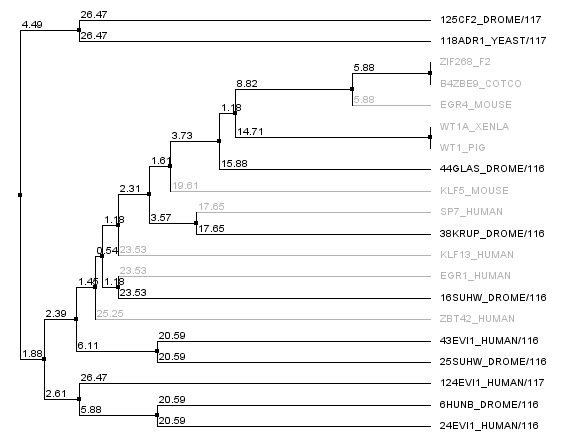
Sequence Generation
We made some small updates to the sequence generator, based on the frequencies we noticed in the outputs of the tests we ran.
- We decided to only include pseudocounts for position 6 for 'CNN' and 'ANN.' Originally, 'CNN' and 'ANN' were using pseudocounts for all seven positions. However, this introduced a noticeable increase in amino acids, such as tyrosine (Y), that have been shown to occur rarely in zinc fingers (according to our data from OPEN and Persikov). Additionally, because tryosines occured so rarely in the data (11 times total in the open data set), we decided not to give tyrosine a pseudocount.
- We added the capability to prevent repeat backbone-helix combinations on the chip. That is, we wanted to make sure that the same exact zinc finger was not generated for different triplet inputs.
To test the sequence generator, we made two sets of 2000 sequences for GAA, then infographic-d the results. Comparing these with the images for OPEN and OPEN+Persikov shows that our generation follows the major themes of those datasets, but also introduces variation. The two generated sets also vary slightly from each other, which shows the influence of randomness on the generation.
| Disease | Target DNA Finger 1 | Helices in Zif268 Backbone | Helices in Zif268 Closely-Related Backbones | Helices in Zif268 Distantly-Related Backbones |
| Colorblindness (Bottom) | TGG | 5150 | 3000 | 1000 |
| Colorblindness (Top) | ATG | 3050 | 3050 | 3050 |
| Familial Hypercholesterolemia (Bottom) | GAC | 5150 | 3000 | 1000 |
| Familial Hypercholesterolemia (Top) | CTG | 3050 | 3050 | 3050 |
| Myc (Top198) | CTC | 3050 | 3050 | 3050 |
| Myc (Top981) | AAA | 3050 | 3050 | 3050 |
Table of target sequences and helix distribution across backbones
- Distribution: Zif268 : Zif268 similar : Zif 268 dissimilar
- Conservative distribution 56.3 : 32.8 : 10.9
- Riskier distribution 33.3 : 33.3 : 33.3
List of Remaining Goals:
- Sort fingers by target
- Pick and assign primer sets
- Reverse translate fingers avoiding type II restriction enzymes and primers
- Append type II restriction enzyme and primer sequences to each finger
- Yay
June 25th-26th - Bioinformatics
This is the set of final target sequences with assigned forward and reverse primers (tags for PCR):
| Disease | Target Sequence | Forward Primer (5'-3' NOT REVERSE COMPLEMENT) | Reverse Primer (5'-3' NOT REVERSE COMPLEMENT) |
| Colorblindness | GCT GGC TGG | ATATAGATGCCGTCCTAGCG | AAGTATCTTTCCTGTGCCCA |
| Colorblindness | GCG GTA ATG | CCCTTTAATCAGATGCGTCG | TGGTAGTAATAAGGGCGACC |
| Familial Hypercholesterolemia | GGC TGA GAC | TTGGTCATGTGCTTTTCGTT | AGGGGTATCGGATACTCAGA |
| Familial Hypercholesterolemia | GGA GTC CTG | GGGTGGGTAAATGGTAATGC | ATCGATTCCCCGGATATAGC |
| Myc-gene Cancer | GGC TGA CTC | TCCGACGGGGAGTATATACT | TACTAACTGCTTCAGGCCAA |
| Myc-gene Cancer | GGC TGG AAA | CATGTTTAGGAACGCTACCG | AATAATCTCCGTTCCCTCCC |
June 27
Wet lab
Sequencing PyrF, rpoZ loci:
- We will sequence these genes in the selection strain just to make sure they are knocked out, especially since it appears HisB is not.
- Picked a colony off ∆HisB∆PyrF∆rpoZ plate (6/21) and grew in 150µL LB plus tet in a 96 well plate for about 2 hrs at 37˚C
- diluted 1 in 20 and used 1µL as template in PCR with KAPA mastermix (see protocols for reagent amounts and parameters)
- annealing temp 65˚C, elongation time 1:15
- PyrF_F, PyrF_R primers
- PyrF_F, PyrF_internalR
- rpoZ_F, rpoZ_R
- rpoZ_F, rpoZ_internalR
- rpoZ_R, zeocin_R
- Run on E Gel to check PCR worked: bands are at the same sizes as the original genotyping gel.
- Tomorrow we will send samples to Genewiz for sequencing
Lambda Red recombination:
- The plates made from the recombination (6/24) did have colonies, but they were very small and took a long time to grow, and so they may not actually have the kan-ZFB insert. We will have to PCR the locus to see.
- Chose 8 colonies from each plate and grew at 30˚C in 150µL LB plus kan in a 96 well plate
- When our primers arrive, we will PCR the locus to check for the insert.
Selection system media:
June 27th - Bioinformatics
To Do for Today
- 100 sequences (and control), 2 each with the same F3 and F2, but different F1, from our test sequences [zif268, OZ123, OZ052, CoDA]✓
- Type II nuclease cut site sequences- put the binding sites into our oligos ✓
- Final backbones with helices ✓
- Programming stuff- Check to make sure there are no cut sites or primers in any of our backbone/helices combinations; check translation order (translates F1→F3)✓
100 Control Sequences
- See our Positive Control Sequences, updated June 28th
- Selected known binding zinc fingers from the CODA table that bind sequences similar to our target sequences
- All control helices from CODA were inserted into Zif268 F2 backbones and have been assigned a seventh primer tag separate from the tags given to the 6 target sequences.
Updated Target Sequences
One of our sequences from before was bad because the F3/F2 combo did not appear in the CODA table... faulty checking, my bad :(
Here is the newest table of target sequences:
| Disease | Target Range | Binding Site Location | Bottom Finger | Top Finger | Bottom AA (F3 to F1) | Top AA (F3 to F1) |
| Colorblindness | chrX:153,403,001-153,407,000 | 3666 | GTG GGA TGG | GAA GGG ACC | RNTALQH.QSAHLKR.####### | QDGNLGR.RREHLVR.####### |
| Familial Hypercholesterolemia | chr19:11,175,000-11,195,000 | 14001 | GGC TGA GAC | GGA GTC CTG | ESGHLKR.QREHLTT.####### | QTTHLSR.DHSSLKR.####### |
| Myc-gene Cancer | chr8:128,938,529-128,941,440 | 198 | GGT GCA GGG | GGC TGA CTC | VDHHLRR.QSTTLKR.RRAHLQN | ESGHLKR.QREHLTT.####### |
| Myc-gene Cancer | chr8:128,938,529-128,941,440 | 981 | GGA GAG GGT | GGC TGG AAA | QANHLSR.RQDNLGR.TRQKLET | EKSHLTR.RREHLTI.####### |
- Green cells are our target sequences.
Cut Site Design
- See our Cut Site Design page
- We left in one proline (P) between the linker and the starting FCQ... of finger 2, but as this proline is the last AA of the OPEN linker (TGEKP) and occurs before the beta sheet in every zinc finger in Zif268 (see zif268's sequence on its [http://www.pdb.org/pdb/explore/remediatedSequence.do?structureId=1AAY PDB page])
- This configuration also allows the library to be used at any finger position because proline ends the OPEN linker.
Updates on the program
The program appears to run extremely slowly because of the computationally intensive step of checking the reverse translated sequences
- In addition to checking for the primers and cutsites, we also have to check for 'GGGGGG' because it can lead to undesirable structures forming. In addition, we have to check for the reverse complements for all these undesirable sequences.
- We decided on a similarity of 0.8 as the maximum acceptable similarity between the sequence the primer bind to and any other part of the generated sequence. If the sequences are too similar, the primer might mishybridize. We originally had a similarity threshold of 0.6 but that made the program run too slowly, so we decided on a threshold of 0.8.
June 28th
Sequencing:
- the following samples from 6/27 were sent to Genewiz for sequencing:
- PyrF F, R (one sample with PyrF_F, one with PyrF_R)
- rpoz F, R (one sample with rpoz_F, one with rpoz_R)
Lambda red results:
- the colonies on the plates did not look promising, and the ones we chose and grew up in LB+kan did not actually grow. Just to be certain, we choose 18 more colonies: 6 from 37.5µL arabinose 100µL plated, 6 from 3.75µL arabinose 100µL plated, and 6 from 37.5µL arabinose 1.5mL plated. Three from each plate were grown in plain LB and three with kan. We will let it grow in 30˚C, overnight if necessary, and hopefully see bacteria for PCR.
- Assuming this does not work, we prepared more ∆HisB∆PyrF∆rpoZ+pKD46 in two ways: we put 3 colonies in LB+amp from the 6/16 transformation plate, and we streaked a new amp plate from the glycerol stock
- Another possibility is that something is wrong with our lambda red. We designed primers to verify that the pKD46 plasmid is really in the cells.
Kan-ZFB-wp-his3-ura3 construct:
- Our last few PCR purifications have given us very low yields, and consequently we have had to use large amounts of our DNA (and the large amounts of buffer salts may also be why our lambda red recombinations have failed). When we tried to amplify our current DNA using the hisura-kan_F and ZFB-wp-hisura_R primers and the Phusion mastermix, it did not work (see 6/23). We will try to gain more product in two ways:
1) Repeat 6/23 PCR but use KAPA mastermix
- the KAPA mix may work better than the Phusion.
- Used KAPA protocol with 1µL of kan-ZFB overlap as template, hisura-kan_F and ZFB-wp-hisura_R primers, 65˚C annealing temp, 90 sec elongation time
- made 2 reactions
2) Repeat overlap extension PCR (see 6/16) with KAPA mastermix
- used KAPA protocol with 1µL kan cassette and 1µL of ZFB-wp-hisura, 65˚C annealing temp, 90 sec elongation
- 10 cycles without primers; hisura-kan_F and ZFB-wp-hisura_R primers added; 15 more cycles
- made 6 reactions
- E gel to check reactions worked: all 6 overlap PCRs successful, but not the other two reactions.
- combined samples 1-3 and 4-6 and ran on 1% agarose gel for extraction
- used Qiagen gel extraction kit and instructions with the following modifications:
- gel bands were dissolved in 500µL of buffer QG regardless of the gel volume
- gel heated at 50C for 20 min (to make up for reduced amount of buffer QG)
- after melting, 10µL of NaOAC (3M) were added to adjust the pH
- DNA from samples 1-3 were eluted in 20µL of ddH2O; DNA from samples 4-6 were eluted in 20µL of buffer EB
- water sample: 273.4 ng/µL, 260/280=1.92
- EB sample: 136.9 ng/µL, 260/280=2.38
June 28th - Bioinformatics
Attention all Harvard iGEM-ers!!! According to the iGEM Main Page, our preliminary project descriptions and safety proposals are due on July 15. Please see the aforementioned link so we can get this done ASAP- we don't want to miss any deadlines and have all our hard work wasted!
- Finalized our Positive Control Sequences, using Justin's macro to insert the F1 helices into the appropriate zif268 F2 backbone
- Length of chip oligos: 131-140bp (based on Cut Site Design)
- Primers: 20bp (x2= 40bp)
- zif268 F2 backbone + helix= 23aa (x3=69bp; some fingers ~3aa longer)
- Some alternate backbones are longer than zif268 F2 backbone
- Type II binding/cut sites= 11bp on each side (22bp total)
- Standard legnth: 40 + 69 + 22 = 131bp
- Use WebLogos as a final visual check of our final generated sequences
Plasmid and Oligo Design Schematics
Chip-Based Sequence Design Schematic
References
<biblio>
- Kosuri2010 pmid=21113165
</biblio>
Harvard Logo
Running the Generator!
File:HARVFasta total.csv NOTE: LATER GENERATED NEW SEQUENCES. NOT UP TO DATE.
Generated Final Chip Sequences
- We ran the generator once earlier this afternoon, but had to re-run it again due to a typo in the cut sites and the number of sequences we desired for each backbone. Luckily, we caught these errors, and after checking the program once again, we ran it a final time this afternoon.
- It took about 45 minutes for the program to generate and reverse translate the 54900 sequences.
- During this time, we created a function that will re-translate the sequences that the generator output. It compares the original helix with the re-translated helix to make sure that our reverse-translate works properly.
- This step went smoothly, and we verified that the sequences were reverse-translated properly.
- To make sure that the distributions generated were as expected, we made WebLogos of the helices generated(see below).
- The output file (in the Dropbox: iGem > chip > final chip.csv) originally had the following headers: 'Target', 'Backbone #', 'Helix Sequence', 'Backbone Sequence', 'Nucleotide Sequence of Zinc Finger'
- We wanted to convert this information into FASTA format.
- We wrote a function that converted our original file into fasta format (in the Dropbox: iGem > chip > fasta.csv)
- The file FASTA_total (also linked above) contains the FASTA for all 50000 sequences (including the 100 controls).
- For those curious, the FASTA format just a format that looks like this:
- We wanted to convert this information into FASTA format.
>Header (For us the header is: Target, Backbone #, Helix Sequence, Backbone Sequence)(The header for the controls are: Index Number, 'control') Sequence (In our case, the nucleotide sequence of the zinc fingers)
Generated WebLogos for Final Chip
- FASTA-Formatted Chip Data:
- >NNN(Target Triplet) BB# Helix Seq.
- Nucleotide seq. of ZF
Bioinformatics Candids
File:HARVPrimer Index iGEM 2011.xls
Design of Plate Practice Sequences
While we wait for the chip to come in, we have a number of techniques and protocols that we can practice on beforehand, so that when the chip comes we'll be ready to go to use what they give us. We will be practicing the following techniques:
- Cutting ZF1 out of our oligos
- Inserting ZF1 into the expression plasmid in between the omega subunit and the linker before F2
- Verifying that combination of our F1 from the oligo with the plasmid produces a viable, functional ZF
- Amplifying subpools of oligos for testing
- Inserting the expression plasmids into the E. coli containing our selection genome
- Verifying that our ZF-binding site/GFP expression paradigm works
To this end, we will be ordering a 96-well plate from IDT containing oligos that will simulate the entire tube of oligos that we will receive from Agilent in four weeks. These oligos will consist of the following:
- 6 positive controls (we know which DNA sequences these bind to)
- 3 of them being the F1 fingers of Zif268, OZ052, and OZ123
- 3 of them being ZF F1s derived from CODA.
- 90 generated sequences, picked from a subset of the chip
- These are picked evenly across the 9,150 sequences generated on the cihp for the TGG triplet F1 target from the colorblindness "bottom finger" target, GTG GGA TGG. This particular target was chosen because the F2/F1 is a GNNTNN combo, which might be more likely to get hits from our chip generation sequences.
The primer tag sequences for the 90 generated sequence subset will be the same as they are on the chip (for the sake of explanation, we will refer to them now as P1F and P1R in this paragraph). The positive controls will be flanked immediately by the same primers as the generated subset so that we can amplify everything as one pool altogether should we need to (so this will be P1F and P1R). However, we will also put an additional set of primers outside of the P1F/P1R primers for the positive controls so that we can specifically amplify the positive control subpool, should we want to. These primers will be the same as the primers for the positive control on the chip (which will be called P2F and P2R here).
To recap, on the chip we will have the following oligos :
45750 other oligos for the 5 other target sequences Oligos (TGG set, 9150 total): | P1F | type II binding site | generated F1 | type II binding site | P1R | Oligos (+ control, 100 total): | P2F | type II binding site | control F1 | type II binding site | P2R |
In our test pool of 96 sequences, we will have two types of oligos (note the two pairs of primers around the positive controls):
Oligo (TGG set, 90 total): | P1F | type II binding site | generated F1 | type II binding site | P1R | Oligo (+ control, 6 total): | P2F | P1F | type II binding site | generated F1 | type II binding site | P1R | P2R |
Once we get our test sequences back from IDT, they will come in a 96-well plate with one oligo in each plate. We should make a mixture using some of each well in order to create a tube that contains all 96 sequences. This will simulate the tube that we will receive from Agilent, except instead of 55,000 sequences we will have 96 sequences only in this tube. From here, we can practice using this as a library.
We can pretend that this tube is just 96 generated sequences on the chip, treating the positive controls as if they were also generated sequences (we only include them in the 96 to ensure that we will indeed get a "hit" from this practice screening). Thus, we can just use the P1F/P1R primer set to amplify all of them in order to use them for the subsequent steps.
These subsequent steps will be those that were outlined above, namely cutting out the F1 sequence from each oligo, ligating this F1 into our expression plasmid, putting the expression plasmid into our selection strain, observing colonies which get infused with ZFs that bind to our target site (the "hits"), and sequencing the colonies that get hits to determine which ZF they are expressing.
We will be repeating these exact same steps once we get the chip, so if we can perfect our protocols with these practice sequences, we should be golden when the chip comes in.June 29th
Our first day with everyone in the wet lab!
PyrF and rpoZ sequencing:
- For some reason, Genewiz said that sequencing failed due to "no priming." We will redo the PCR and send the products in again today.
Lambda red recombination and MAGE:
- The cultures made from the kan plates from our earlier attempt at lambda red did (in some cases) grow, including one colony in kan from 3.75µL arabinose, 100µL plated.
- PCR of liquid culture: used 1µL of culture diluted 1:20 as well as saturated culture of ∆hisB∆pyrF∆rpoZ+pKD46 (diluted 1:20) as a 1529620 locus wild-type control
- primers (from Vatsan): 1529481-f, 1529806-r
- KAPA mastermix and procedure with 56˚C annealing and 90 seconds elongation
- E Gel of product: both wild-type and the sample hopefully containing the insert had the same short band of around 350bp--the recombination was unsuccessful
- PCR of liquid culture: used 1µL of culture diluted 1:20 as well as saturated culture of ∆hisB∆pyrF∆rpoZ+pKD46 (diluted 1:20) as a 1529620 locus wild-type control
- Used overnight saturated culture to reinoculate; once close to mid-log, culture split into 2 1.5mL amounts and 37.5µL arabinose added to each
- same procedure as previously described, but with about 300ng kan-ZFB construct and a 2.5µM final concentration of HisBNuke3 (12.5µL of 10µM stock)
- electroporate with 1.8 kV, about 5
- recover 3 hrs
- kan-ZFB insertion colonies plated on kan, MAGE on amp
PCR Preparation
- Lambda Red- Selection strain glycerol stock: 1/100 dilution, 2 uL stock with 198 uL ddH2O
- Spec (Colony)- Touch 1 colony with pipet tip, add and mix with pipet in 20 uL ddH2O, then vortex
PCRs
- PKD46 (Lambda Red)
- Kapa Mix 2x- 12.5 uL
- Primer_F- 0.75 uL
- Primer_R- 0.75 uL
- Template 1 uL
- ddH2O- 10 uL
- (25 uL total)
- Spec (Colony)
- Kapa Mix 2x- 12.5 uL
- Primer_F- 0.75 uL
- Primer_R- 0.75 uL
- Template 1 uL
- ddH2O- 10 uL
- (25 uL total)
- Spec (Miniprep)
- Kapa Mix 2x- 12.5 uL
- Primer_F- 0.75 uL
- Primer_R- 0.75 uL
- Template 2 uL
- ddH2O- 9 uL
- (25 uL total)
Expression Plasmid Design in silico
Today, we designed our expression plasmids in SeqBuilder. This included plasmids for our 6 target sequences, and 3 positive controls (9 in total). These positive controls were the following:
| Index | Nucleotide Sequence (5\'-3\') | Helices (F3 to F1) | Notes |
| 16 | GAA GGG AAC | QDGNLGR RREHLVR HRTNLIA | Very similar to one of our target sequences (CB top), which is GAA GGG ACC |
| 55 | GGA GTG GTG | QTTHLSR DHSSLKR RNFILQR | Very similar to a target sequence (FH top), which is GGA GTG CTG |
| 77 | TGT GAA TAG | RRRNLQI QQTNLTR QPHGLTA | Out of ze air |
Each of our expression plasmids contained:
- Omega subunit
- Omega/F1 linker (taken from paper that Dan and Noah emailed us), http://nar.oxfordjournals.org/content/36/8/2547.short
- type II binding sites
- gap between type II binding sites that contains XbaI restriction enzyme site (which is not present anywhere else in the entire expression plasmid)
- F1/F2 TGEKP linker
- F2 for a specific target sequence
- F2/F3 TGEKP linker
- F3 for a specific target sequence
- TAA stop codon immediately after F3
All of this is on our spec-resistance-containing plasmid. The above construct replaced the GFP which was present previously on this plasmid.
Tomorrow we will begin design of our primers from these SeqBuilder files.June 30th
Lambda Red, Backbone, and Sequencing PCR
- Gel run on the presence of a Lambda Red protein in the pKD46 plasmid showed that it is indeed present, so our recombination failures have not been due to an incorrect plasmid.
- Gel run on the backbone of pZE21G plasmid was success and took us one step closer to obtaining all parts necessary for the three part assembly
- Gel run on the pyrF and rpoZ was success
- Therefore we sent the PCR products and primers to GENEWIZ for sequencing again
pZE21G backbone:
- Since last night's PCR was successful, we will redo it with a few protocol adaptations to get a cleaner product and to increase our yield when we purify
- KAPA mastermix and protocol: primers HindIII-F and KpnI-R
- template: pZE21G miniprepped plasmid, 1µL
- 2 min elongation time, 30 cycles
- 2 samples at 55˚C annealing, 2 samples at 60˚C
Lambda red and MAGE:
- Yesterday's prep produced tiny colonies on the MAGE plates and (so far) none on the kan-ZFB plates. Just in case it didn't work, we will redo the lambda red using even more DNA and perform a second round of MAGE using culture from yesterday that was not plated.
- same procedure, but with the following changes:
- 5µL kan-ZFB (about 1 mg)
- recover 3 hrs
- kan-ZFB: plate 100µL and 2 mL on kan plates
- MAGE: plate 1µL and 10µL on amp plates
- To see if the colonies on the MAGE plate knocked out HisB, we chose 24 colonies, resuspended them in water, and put half the cells in LB (complete media) and half in NM media (does not have histidine). 96 well plate, 150µL media, grown overnight at 30˚C.
ZF Expression Plasmid Ultramer and Primer Design
Today, we designed primers ZF_073 through ZF_085 as listed in the iGEM Primer Index spreadsheet. These were basically two sets of primers: the primers to clone out the omega subunit and linker, and the ultramers that would construct the last part of the linker along with the type II binding sites and F2/F3 fingers. One should refer to the primer list for the sequences.
Note: the annealing sequence for the ultramer overlap contained a 72 degree melting temp hairpin. To get around this, I changed one of the codons in the F2 backbone. The F2 backbone begins with "FQCRIC", and so I changed the codon for the arginine (R) from CGC to CGT, which resolved the hairpin problem.
June 30th - Bioinformatics
Updated Primer list and FASTA formatting
We ran into a small hiccup, when we were informed that we had forgotten to reverse translate the reverse primer sequences that were being appended to the generated sequence. This is because the primer sequences we were given were the sequences for the actual primers, rather than sequences to which the primers would bind. Luckily, we caught this error! We did have the re-run the generator because we had to make sure that our generated sequences did not contain the new primers.
- Here is the updated primer list:
This is the set of final target sequences with assigned forward and reverse primers (tags for PCR):
| Disease | Target Sequence | Forward Primer (5'-3' NOT REVERSE COMPLEMENT) | Reverse Primer (5'-3' REVERSE COMPLEMENT) |
| Colorblindness | GCT GGC TGG | ATATAGATGCCGTCCTAGCG | TGGGCACAGGAAAGATACTT |
| Colorblindness | GCG GTA ACC | CCCTTTAATCAGATGCGTCG | GGTCGCCCTTATTACTACCA |
| Familial Hypercholesterolemia | GGC TGA GAC | TTGGTCATGTGCTTTTCGTT | TCTGAGTATCCGATACCCCT |
| Familial Hypercholesterolemia | GGA GTC CTG | GGGTGGGTAAATGGTAATGC | GCTATATCCGGGGAATCGAT |
| Myc-gene Cancer | GGC TGA CTC | TCCGACGGGGAGTATATACT | TTGGCCTGAAGCAGTTAGTA |
| Myc-gene Cancer | GGC TGG AAA | CATGTTTAGGAACGCTACCG | GGGAGGGAACGGAGATTATT |
| Controls | n/a | GTACATGAAACGATGGACGG | CGCTGAGGAGACTATACCAG |
There was also a small error in the FASTA formatting. There are not supposed to be any spaces in the header, so the spaces were replaced with underscores.
- Example:
>1_controlGTACATGAAACGATGGACGGGGTCTCAGCCATTCCAATGTCGTATCTGTATGCGTAATTTTTCACGCAAACACCATTTGGGTCGTCATATCCGTACGCACACGGTGAGACCCGCTGAGGAGACTATACCAG
July 1st
HisBNuke3 MAGE results:
- All the MAGE round 1 colonies grew overnight in the LB but not the NM medium: either they all had the HisB gene knocked out (unlikely) or there is something wrong with the NM medium. As a control we grew (∆HisB)∆pyrF∆rpoZ+pKD46 in NM, but nothing grew, implying that the problem is with the NM medium.
- There were small colonies on the MAGE round 2 amp plates, so we chose 12 from each plate and grew them in 100µL of SOC medium.
- PCR of the colonies for sequencing:
- KAPA mastermix and protocols, with His3_F and His3_internalR primers, 2µL culture as template, 65˚C annealing, 15 sec elongation, 25 cycles
- ran on gel: band around 500-600, but very faint (probably because we did not let the culture grow up enough)
- sent to Genewiz to be sequenced with His3_F primer
Lambda Red recombination results:
- The plates from 6/30 had an almost crystalline formation on them, which may or may not be bacteria. The 6/29 plates, which we had left at 30˚C, did have colonies but they may be contaminants. We grew up 12 colonies from each 6/29 plate and 6 "colonies" from the 2mL 6/30 plate in SOC medium with kanamycin, and next week we will PCR the 1529620 locus to check.
pZE21G spec backbone:
- PCR of backbone was successful (see E gel below). Gel extracted with Qiagen kit with the following modifications to the kit instructions:
- 2 gel volumes of buffer QG, heated 10-15 min
- after heating added 10µL 3M NaOAc
- eluted in 30µL ddH2O
- 157.4ng/µL 260/280=1.9; 129.2ng/µL 260/280=1.88
Selection system plates:
- Made 3-AT and 5-FOA plates following 2006 Meng Nature Protocol (see protocols for details). 5-FOA plates have a blue stripe, 3-AT plates (0.5 mL 3-AT) have a green stripe.
July 4th
FIREWORKSJuly 5th
Team ZF Assembly
- Assemble and confirm zif268 plasmid
- Lac-ω-zif268 with spec → Lac-zif-ω with cpic
- ZF: 2-3 ultramers
- PCR out ω subunit
Team Wolfe Selection
Goals for the week:
- MAGE out HisB
- What we've been trying/why it's not working — keep trying!
- PCR out Kan Cassette (colony PCR)- analysis/check that it worked
- We did the insertion and have things growing in Kan that look like our cells — we probably have it!
- As long as it's the right size and in the right place, it probably worked, meaning we have 2 HIS genes → MAGE is to remove the endogenous genome copy in vivo
- Construct (PSR01): ~ - KAN - ZFbs - weak promoter - URA3 - HIS3- ~
- Fix/Test NM media
- Made last week, nothing worked in it — try more glucose
- Wolfe strain seems to grow really slowly (~36h); try glycerol stock of PKD46, grows faster
- Make other 3-AT plates (1.5)
- 3-AT is a competitive inhibitor of His; the stronger His is expressed, the more 3-AT the cell can tolerate and still grow
- Test 3-AT plates
Today's results:
- PCR to check whether kan-ZFB-wp-hisura was successfully inserted into the genome
- Used KAPA master mix and protocols, same procedure as 6/29/11
- Because of KAPA shortage, only ran samples 6-8 from 100µL 6/29 plate and 6-7 from 2mL 6/29 plate plus (ΔHisB)ΔpyrFΔrpoZ+pKD46 from 6/29 culture as a control (should produce a band around 300bp, while the insert would make the band 2-3kb)
- Ran on E-Gel with team TolC's samples, but there was an issue loading the gel, so also ran separately on another gel. Unfortunately most of the PCR reactions strangely did not work, but two of the samples appeared not to have the insert (see below).
- Redo PCR:
- out of KAPA so had to use Invitrogen Platinum Supermix
- each reaction had 22.5µL supermix, 0.5 µL each 10µM primer, 1µL template, 0.5µL H2O
- 20 reactions, including one from the same control used above.
- followed Invitrogen instructions, with 3 min elongation, 56 C annealing, 30 cycles
- Assuming the PCR is unsuccessful, we will grow up (ΔHisB)ΔpyrFΔrpoZ+pKD46 (from 6/28 plate) overnight in LB+amp
- NM medium:
- To test Sarah's NM (made 6/30) we will grow up pKD46 strain in 3mL of it overnight at 30 C. If no bacteria grew, we will try remaking it ourselves.
Team TolC
- PCR out and insert Kan construct in front of TolC (similar to Wolfe selection)
- Construct 1: ~ - KAN - ZFbs - weak promoter - ~ (done, PCR, gel extraction)
- Used primers ZFB-wp-tolC-r and tolC-kan-f
- Construct 2: ~ TolC ~ (do not have primers yet)
- Note that ~ indicates a homology region
- Construct 1: ~ - KAN - ZFbs - weak promoter - ~ (done, PCR, gel extraction)
- Need the EcNR2 strain to come in before we can work with it (came in Thursday 7/7/2011, the one from Wednesday 7/6/2011 was not growing well.)
- Inactivate rpoZ (similar to inactivating His3, but should be easier to use MAGE with- EcNR2 is a strain designed for MAGE)
- MAGE oligo rpoZ deletion will arrive on Thursday 7/7/2011
- Make SDS (how we test TolC +vely)(done, stored at room temperature)
- Only cells with active TolC can survive SDS treatment
Web Design
To Do
- Safety Description
- Email Alain/Harvard biosafety group ✔ (Meeting pending)
- Needed information:
- Strain names
- Antibiotic Resistance
- DNA inserts/removals
- Draft Project Description ✔
- Finalize
- Update the Facebook page/create a new 2011 page
- Get the Public Wiki up and running
- Figure out templates
- Update Twitter
Notes to All Teams
- Teams: Make sure everything is organized in your dropbox!
- *Announcing a New (and Final) Plasmid Name* PSR01: formerly known as Wolfe Plasmid/Vatsan's Plasmid/Selection
- Contains ~ - KAN - ZFbs - weak promoter - URA3 - HIS3- ~
July 6th
Team ZF Assembly
Because our primers still haven't arrived, the members of Team ZF Assembly are working with the Web Design Team.
Team Wolfe Selection
- Redo PCR Results:
- Samples 1,3,4,5,6,7,8,9,11 from the 100µL 6/29 plate all showed unsuccessful introduction of kan-ZFB-wp-hisura
- Samples 2,3,4,6,7,8,9,10,11,12 from the 2mL 6/29 plate all showed unsuccessful introduction of kan-ZFB-wp-hisura
- (ΔHisB)ΔpyrFΔrpoZ+pKD46 from 6/29 culture used as a control
- NM media has 1% of the glucose concentration written in the protocol, it is 0.4mg/ml instead of 40mg/ml. Nevertheless, our overnight culture of pKD46 grew successfully so we will continue to use the media unless other problems arise.
- One possible explanation for our failure to PCR out a kan-ZFB insert from the recombined colonies is that the insert was integrated into the genome somewhere else besides the 1529620 locus. This might be why the PCR shows no insert while the colony still grows in kanamycin. We will try to PCR the insert using primers that anneal to the kan and his-ura sections (since these primers are about 70 bases long, we will do a 2-step cycle)
- Invitrogen Platinum Supermix reagents and protocols, with 3:30 at 72˚C instead of separate annealing and elongation, 25 cycles
- used same cultures as for PCR listed above
- kan-ZFB-wp-hisura insert as control
- results from 2 E Gels: PCR not very successful. Colonies showed no bands while the control showed only a side product too small to be the full insert.
- Grew up 24 more kan-ZFB lambda red recombined colonies (12 from 100µL 6/29 plate, 12 from 2mL 6/29 plate) in LB+kan in 96 well plate for PCR tomorrow
- Diluted 24 colonies (1 ss+pKD46 control, 11 from MAGE round 2 1µL plate, 12 from MAGE round 2 10µL plate) in 30µL ddH2O and split between NM,NN+Histidine, and LB+amp to check his phenotype
- NM+his media: 49mL NM, 1 mL 5% histidine solution
- Made 1.5mL 3-AT plates
Team TolC
- Gel extraction of KAN-ZFBs-wp as there is a side product.
- To increase yield, spin down the contents of both eppendorf tubes into a single column, have a 2:1 volume ratio of QG Buffer to gel volume, e.g. 1ml QG buffer to 0.5ml gel in step 2, and elute in 30µl water in step 13)
- checked the ECNR2 strains, both appear to have not grown
- note from 7/7/2011, new ECNR2
- running another PCR since there was errors in gel extraction, and the yield was less than 20ng/µl, and purity was very bad.
TOLCINV PCR-Machine 7
- 94°C for 2 min
- 94°C for 30 s
- 53°C for 30 s
- 72°C for 1.5 min
- Previous three steps repeat 30 times
- 72°C for 5 min
- 4°C forever
Web Design
- Project description
- Web design brainstorming;exploring past designs and templates
July 7th
Team ZF Assembly
Our primers still haven't arrived. We are working with the Web Design Team.
Team Wolfe Selection
- PCR for Round 2 MAGE cultures in LB media
- The samples came from the overnight culture of MAGE/control strains grown in LB+amp, NM+his, and NM. Oddly, the (∆HisB)∆pyrF∆rpoZ+pKD46 control grew only in NM+His and LB, and not in plain NM.
- Samples
- Control= 1 ss+pKD46
- 11 cultures from 1μL plate in LB media
- 12 cultures from 10μL plate in LB media
- Program
- Anneal at 56°
- Elongation for 90 seconds
- All else according to standard KAPA protocol
- E gel of control and 1µL plate colonies 1-8 to check PCR worked (it was successful)
- samples prepared for sequencing tomorrow
- Kan-ZFB insert check PCR results:
- the overnight cultures grown yesterday were used in a PCR (same KAPA protocol as before) around the 1529620 locus. Not all the cultures grew; 100µL plate cultures 1-5 and 2mL plate cultures 1-12 were used.
- Results: some of the reactions, strangely, did not work, but the ones that did showed a short band and thus did not have the insert (see below)
- HisBNuke3 MAGE round 3:
- used same protocol as previously described, using 1.5mL mid-log culture from MAGE round 2
- will recover overnight so that we can reinoculate and continue MAGE rounds tomorrow
- NM medium:
- added 3.9g glucose to 100mL NM medium to bring the glucose concentration up to the correct level.
- Because (∆HisB)∆pyrF∆rpoZ+pKD46 did not grow in plain NM, we are curious to see if that was due to low glucose levels. One colony from a plate was put in 3mL NM(gluc) and will be grown overnight.
- HisB MAGE2:
- In case the sequencing does not show successful MAGE, we will grow overnight 48 more colonies (24 from each plate) in 100µL of NM(gluc) and LB+amp
Team TolC
- making culture tubes of ECNR2 and ECNR2delTolC for glycerol stock (no Amp)
- making culture tubes of ECNR2 for MAGE to delete rpoZ (one with amp, one without)
- dilutions of rpoZ deletion MAGE oligo, 20µM
- dilution of rpoZ deletion MAGE oligo, 1µM, for MAGE.
- serial dilution of ECNR2 after MAGE round 1, and round 2, with 20µl of 100x dilution of concentrated culture. For plating onto amp plates.
- During Gel extraction, ignored 3x volume in step 2 and instead used 500 µl of QG buffer. Additionally, used 18 µl of EB buffer and not water in step 13
Web Design
Brainstorming
- Minimalist toolbar, metallic crimson color
- "Popout" menu below, not dropdown
- Slideshow on front page
- First slide: Brief text project description, brief youtube video description (in layman's terms)
July 8th
Team ZF Assembly
PCR of omega+zif268 with overhangs
We performed a PCR to take out our omega subunit plus zif268. We used the following recipe:
- 10 ul KAPA readymix
- 0.75 ul of hindIII (primer)
- 0.75 ul of wF+plLacO (primer)
- 1.2 ul template
- 12.3 ul water
The first steps of the PCR involved heating at 95* (for 5 minutes) and 98* (for 20 seconds). Annealing temperature was 56*. Extension time was 30 seconds.
The product of the PCR should be 709 bps. It includes the omega subunit, zif268, as well as overlap sequences homologous to the selection plasmid. We ran an e-gel to ensure that our desired product was present:
Gel purification of PCR product
We had to gel purify our PCR product in preparation for isothermal assembly, using our protocol for gel purification. The result from running the gel can be seen below - we cut out the bands at 709 bp, the expected size of our product.

In the final step of the purification process, we eluted our DNA in buffer EB. We used the nanodrop spectophotometer to determine the concentration of DNA present.
- The concentration was 54.3 ng/ul.
Team Wolfe Selection
MAGE round 3:
- MAGE cultures that recovered overnight were saturated, so we made 1:1000, 1:10000, and 1:100000 dilutions and plated 20µL of each onto amp plates and left at 30˚C overnight.
MAGE round 2 cultures from yesterday:
- We did a PCR (His_F and and His_R primers) on 24 of the 48 cultures we grew and sent them off for sequencing.
Results of NM culture:
- The selection strain (∆HisB∆pyrF∆rpoZ+pKD46) did not grow in NM, which is worrisome. None of the MAGE samples grew in NM either, so either they all have HisB knocked out or there is something wrong already with the strain's His pathway.
- We will grow up selection strain (without pKD46) from glycerol stock in LB+tet and transform with Vatsan's plasmid tomorrow to see if that has any effect on the his-deficiency phenotype.
Kan-ZFB insertion: modified nucleotides:
- Primers finally arrived that would put modified nucleotides on the 5' ends of the insert, which should improve lambda red efficiency.
- PCR: KAPA protocol with Kan forward phosphorthioate and URA2 reverse phosphorthioate, 56˚C annealing, 90 sec elongation, 25 cycles, 1µL kan-ZFB-hisura DNA as template
- Results: PCR only produced a smaller side product. This is strange since we also ran a gel of all our different kan-ZFB-hisura purifications and they all run at the correct size (see images below).
Team TolC
- Performed re-inoculation of ECNR2-Placed into tube labeled ECNR 2 MAGE 3 in 30 degree shaker.
- grew up 24 colonies total for sequencing ECNR2 for rpoZ deletion (the colonies appear to have grown much faster than expected).
- rows A (MAGE round 1) and B (MAGE round 2), for PCR and sequencing. to be placed in the 4C refrigerator after use as template.
- RPOZ PCR-Machine 6
- Primer Annealing = 56 degrees
- Extension 48 = seconds
Team Web Design
- Edited/Re-drafted our project description, see Dropbox (It's a bit long as is now, but the excess informaiton that we cut out can still probably be used somewhere on our website
- Sketched draft pages of the public wiki
- Homepage- first draft sketch done based on the characteristics and requirements we'd discussed. However, there are a few issues (i.e., how to include some of the iGEM wiki reuqirements).
July 9
Team ZF
Isothermal Assembly
We performed an isothermal assembly in order to insert omega+zif268 into the plasmid containing the spec backbone.
- The concentration of the plasmid (previously prepared) was 157.4 ng/ul.
- The concentration of the w+zif268 was 54.3 ng/ul.
Using our isothermal assembly protocol we determined we needed:
- 0.63 ul backbone (length: ~2.2 kb)
- 0.59 ul w+zif268 (length: ~0.7 kb)
- 2.78 ul water
- 15.0 ul isothermal assembly solution
Transformation of electro-competent E. coli
We electroporated our cells so they would take up the plasmids, using:
- 1.0 ul DNA
- 40.0 ul cells
- 500 ul LB
We plated the cells, using this protocol, on spec plates, one of which contained 50 ul of cells and the other 150 ul of cells. The cells have been incubated at 37*, and will be left there overnight. Cells that have taken up the plasmid have spec-resistance and should be able to survive. Tomorrow, we will be picking colonies and performing PCR on them to determine whether they contain w+zif268.
Team Wolfe
- MAGE3 plates look good--we'll choose colonies for sequencing on Monday.
- Transformation of selection strain with Vatsan's plasmid:
- We're curious to see whether Vatsan's plasmid (Zif268 omega, ZFB, wp, hisura) will have an effect on the (∆HisB)∆pyrF∆rpoZ strain's growth despite the seemingly intact HisB.
- Transformed mid-log selection strain (reinoculated from overnight culture) with about 100ng of Vatsan's plasmid following standard procedure.
- After 2 hr recovery plated on amp plates with 100µL or 1mL
July 10th
Team ZF
PCR to check for omega+zif268
All colonies that grew on the plates we left overnight should have spec-resistance, but they may not have the omega and zif268 unit that we inserted yesterday with isothermal assembly. We performed a PCR on 13 colonies picked from the 50 ul plate to find a colony that contains the w+zif268 insertion. We used the same recipe at our PCR reaction [[#PCR of omega+zif268 with overhangs on Friday. If the insert is present, then we should see a band at 709 bp. We also included 2 positive controls: our isothermal assembly product and our selection strain from which the w+zif268 was originally copied.
We ran an agarose gel to check the bands:
July 11th
Team ZF
We did a miniprep of the 12 colonies we picked Sunday and left overnight in LB. Here are the concentrations of our products:
| ID | Conc. (ng/ul) | 260/280 |
|---|---|---|
| 1 | 6.63 | 1.27 |
| 2 | 12.96 | 1.53 |
| 3 | 9.28 | 1.41 |
| 4 | 7.23 | 1.31 |
| 5 | 12.64 | 1.55 |
| 6 | 10.77 | 1.48 |
| 7 | 17.19 | 1.73 |
| 8 | 39.70 | 1.78 |
| 9 | 55.73 | 1.81 |
| 10 | 24.34 | 1.72 |
| 11 | 25.19 | 1.68 |
| 12 | 38.57 | 1.74 |
| 13 | 27.26 | 1.75 |
Then we performed a PCR on the 12 miniprep products, the 12 colonies in LB, as well as 3 controls (negative control, isothermal assembly product, selection strain) to find a colony that has the omega+zif26 insertion:
- 10 ul KAPA readymix
- 0.75 ul of hindIII (primer)
- 0.75 ul of wF+plLacO (primer)
- 1.2 ul template
- 12.3 ul water
The first steps of the PCR involved heating at 95* (for 5 minutes) and 98* (for 20 seconds). Annealing temperature was 56*. Extension time was 30 seconds.
We ran a 1% 100 ml. agarose gel at 120V to check the success of the PCR.
The bands were rather thick, so it was difficult to estimate the exact band size. However, the bands appeared a bit below 650 bp, although we expected a size of 709 bp, so we ran an e-gel on some of the colonies to ensure that that bands were indeed the right size.
The bands were closer to the size that we expected, so we decided that we successfully inserted w+zif268 into the plasmid. We decided to pick colony 9 (which had the highest concentration post-miniprep) and work with that from now on. We made spec plates with 50 ul of colony 9.
Team Wolfe
Selection strain transformed with pSR01:
- both plates had lots of colonies--almost too many. We need to make sure the plasmid is, indeed, in these cells.
- Colony PCR:
- picked 6 colonies and diluted in 7µL H2O: 3 for PCR template and 4 to be grown up in LB+amp
- KAPA protocol using M13_F and M13_R primers (anneal to the vector), 50˚C annealing, 2min elongation
- E gel results: lots of bands but rather messy and not exactly what we'd expect. We'll try to verify the presence of the plasmid in a few other ways.
- Sequencing:
- We sent out the PCR samples with M13_R to Genewiz
- Culture PCR:
- We used the cultures made with the colonies used for PCR above as template to see if this gives us cleaner results.
- same protocol as above except with 1µL of 1:20 dilution of culture as template.
- Assuming that the plasmid is indeed in the colonies, we will grow an overnight culture in LB+amp as well as the Wolfe selection strain and tomorrow we will use a growth reader to check their phenotypes in NM
MAGE round 3 colonies:
- In case pSR01 does not rescue the selection strain's growth phenotype, we will PCR 96 colonies from the MAGE3 plates and send them out for sequencing tomorrow.
- Used 9µL KAPA, His_F and His_R primers, 3µL suspended colony (out of 7--the remaining 4 grown in LB+amp)
Thio kanZFB:
- We retried the PCR to put modified nucleotides on the ends of the kan-ZFB-wp-hisura insert using the same procedure as 7/8/11
- E gel: reactions didn't work
- Tried again with a longer elongation time (3 min) and let run overnight.
Team TolC
Sequencing of rpoZ delete
- Since the sequencing was sent after 3pm on Friday, it wasn't picked up before today (Monday), so we are going ahead with lambda red recombineering of the KAN-ZFB-wp into the ECNR2 genome
- glycerol stocks of ECNR2 and ECNR2ΔTolC were made.
Team Web
- Looked at good wikis from last year.
July 12th
Team ZF
PCRs of finger ultramers
We received the ultramers for fingers two and three of our 6 experimental expression plasmids. We performed an overlap PCR in order to join the two ultramer pieces and make a whole unit. Ultimately this unit with be assembled with the omega subunit and the spec backbone to make our final expression plasmids. We used the following recipe:
- 10 ul KAPA
- 13.5 ul water
- 0.75 ul forward ultramer
- 0.75 ul reverse ultramer
We had an annealing temperature of 58* and an extension time of 15 seconds.
However, in addition to the expected band at approximately 300 bp, the bands for our ultramers was extremely streaky, indicating that there may be other contaminants. We decided to perform a PCR purification of these samples, using our protocols, and see if there was an improvement in the gel.
Even after the gel purification, our bands were streaky. We decided to redo the PCR, placing all the reactions in single tubes, performing a touchdown PCR instead. Our annealing temperature started at 70*, repeated for 2 cycles, and then decreased 2*, every two cycles, until it reached 58* (the optimal annealing temperature), where it remained until the 25 cycles were complete. We left this PCR going overnight. (See July 13th for the gel image.)
PCR of expression plasmid cross-junction
We also performed a second PCR on colony nine (the colony we decided with which we decided to proceed) to confirm that our omega+zif268 in the spec backbone was successfully inserted into the E. coli. The expected product was the cross-junction on the plasmid, approximately 1.4 kb. We used the same recipe as that used on July 9th, except with a forward primer of PZE23G-3581 F and a reverse primer of PZE23G-2133 R, and had a 55* annealing temperature and an extension time of 45 seconds.
After running an e-gel, we confirmed that our w+zif268 was inserted into the plasmid.
PCR and gel extraction of omega subunit
We performed a PCR to get out the omega subunit+linker, with an annealing temperature of 56* and an extension time of 15 seconds. The miniprep from colony 8 was the template DNA. We will use the product in assembling our final expression plasmids.
We determined that the PCR was successful after running the sample on an agarose gel, and performed a gel extraction so that we could use the product in our isothermal assembly.
The gel extraction was successful, and we had a final concentration of 120.5 ng/ul.
Overlap PCR of OZ052 and OZ123
We performed an overlap PCR using the ultramer pairs that solely encoded the F1, F2, and F3 fingers of OZ052 and OZ123. The annealing temperature was 62* and the extension time was 15 seconds. The results of the PCR can be found below (the products are only in the last two lanes) and the products were also PCR purified before being put into storage at -20*C.
Team Wolfe
MAGE round 3 samples:
- 94 sent out for sequencing (numbers go A1-H1, etc.)
Thio kan-ZFB results:
- PCR run out on E Gel: not successful. We do not know what is still causing our PCR to fail.
pSR01-transformed selection strain:
- We discovered that hisB is a two-function protein, with the N-terminal region acting as an HPase and the C-terminal region as an IDPG. His3 only complements the IDPG activity, so even if our MAGE worked, it might destroy our selection system. The two aa deleted in hisB are in the C terminal region, so maybe they do inactivate it. We emailed Keith Joung whose lab made the selection strain to see how HisB was deleted.
- In case this mutation is correct but lambda red in the selection strain still eludes us, we designed MAGE oligos for use in EcNR2 to either delete the two aa or put 3 stop codons after the HPase region.
- culture PCR results: cultures 3-4 had a strong band (and 2 and 5 weak ones) around 850-1000bp. It is interesting how different these results are from yesterday's colony PCR gel.
- Sequencing results: The sequences sent from Genewiz aligned well with the pSR01 plasmid sequence and covered pretty much all of URA3. This implies that the cells did indeed take up our plasmid.
- Growth phenotype:
- 12 colonies were chosen and split between NM (gluc), NM+IPTG (to induce zif268 expression), NM+his (gluc), NM+his+IPTG, LB+amp, LB+amp+IPTG and grown overnight. (Final concentration IPTG=500µM)
Team TolC
- MAGE knockout sequencing
- Received sequencing from the MAGE knockout of rpoZ within the TolC genome
- Observed all 24 sequenced attempts and it appears as none of them have the knockout and stop codons placed into genome
- Possible reason behind failure is that one, we may not have been reading the results correctly or two, the MAGE oligo had all three stop codons right next to each other in the oligo and may have needed to be separated by three nucleotides each in order to maximal annealing
- Lambda Red Recombination of kan-ZFB-wp insertion into MAGE knockouts
- Plates from the recombination showed small colonies
- With this we picked 6 colonies from the 4 different plated recombination cultures and grew them to saturation
- Began PCR with TolC_Seq_F and TolC_Seq_R primers in order to determine whether recombination was successful
- Procedure (on gradient PCR machine, name: ABC, folder: igem)
- KAPA mixture
- Then 95 C, 5 min
- 98˚ C, 20 sec
- 60˚ C, 15 sec
- 75˚ C, 45 sec
- Repeated cycle for 30 times
- 72˚ C, 5 min
- 4˚ C, forever
- Tomorrow we plan to run gel
- Length will be:
- 450 bp if insertion failed
- 1200 bp if insertion of Kan cassette only
- 1650 bp if insertion of Kan-ZFB-wp
- Length will be:
- Plates from the recombination showed small colonies
- Insertion Construct for TolC (homology-kan-ZFB-wp-homolgy)
- Began 90 µL total of PCR for the insertion construct since we ran out
- If gels show failed PCR tomorrow we will start from normal ENR2 without any MAGE and begin with lambda red recombination and possibly make new MAGE primer and then knockout rpoZ
Team Web Design
- Met with Harvard biosafety officer, Sidney
- Send to him: list of strains, plasmids that we are using
- Note to all iGEM-ers: We will all be attending a biosafety seminar on Friday, July 15th from 10am to 12n in Biolabs 1058.
- In case you haven't already, please see Alain's message below:
- Every member of the Harvard iGEM team (unless you are absent on Friday) has to attend the next lab Safey/Biosafety Blood born pathogens training this coming Friday 7/15/2011 from 10 am to 12 noon. The training takes place in the Biological laboratories (16 Divinity Ave) room 1058. If you cannot go and have a very good reason let me (Alain) know. If you attended a similar training session on the Cambridge campus or at the Medical school you don't have to attend. Otherwise you have to go.
July 13th
Team ZF
Results of ultramer touchdown PCR
We ran an e-gel on the product of our touchdown PCR. Once again we have our band at 344 bp. It is still slighly streaky, but much less than our earlier PCR reaction. There are some faint bands smaller than our expected product, which are likely the ultramers we used in the reaction. We'll use the product for our isothermal assembly later today.
Isothermal assembly and transformation of expression plasmids
We followed our protocol for isothermal assembly, using the following recipe:
- 0.63 ul backbone (at 157.4 ng/ul to get 100 ng)
- 0.13 ul omega+linker (at 120.5 ng/ul)
- 0.50 ul ultramer (~30 ng/ul)
- 1.24 ul water
- 7.5 ul isothermal assembly solution
The sizes of the pieces we put together were the following:
- Backbone: 2.2 kb
- omega+linker: 352 bp
- ultramer: 344 bp
Note: We also made a negative control of the isothermal assembly, only putting in the spec backbone without omega+linker or ultramer.
We then performed transformations to insert our isothermal assembly products into E. coli, following our usual protocol. However, we ran out of electrocompetent cells, so only samples 78 - 82 were done with electroporation while 77, 83-85, and the negative control were done with chemical transformation, using these protocols (the samples are named after the reverse ultramer ID in the primer index that were used to generate the ultramer sequences).
We then plated 1 ul of the cells on spec plates and left them overnight at 37*. Because we ran out of our own spec plates, we also had to use LB plates that had spec added to it, and spec plates that were made in April.
Team Wolfe
∆HisB∆pyrF∆rpoZ+pSR01 growth results:
- When no IPTG was present, the bacteria grew in LB+amp, NM+his, and NM, showing that the plasmid rescues the selection stain's growth phenotype! This implies that our strain had the right genotype all along. However, when IPTG was added to the media, the strain only grew well in LB. This is very odd, since IPTG was supposed to induce zif268 and thus His3 expression. We will try a couple things to make sure nothing went wrong:
- redo cultures in the same pattern as yesterday--perhaps IPTG+/- were mislabeled
- inoculate cultures of ∆HisB∆pyrF∆rpoZ +/- pSR01 so that Vatsan can use a plate reader to compare their growths
- Joung wrote back and said that the HisB deletion is in fact 6 bases in frame. He also mentioned something about a lac deletion which we are looking into.
MAGE3 sequencing results:
- none of the colonies had the stop codons. This may be because mutS is not knocked out, and it can correct strands that have up to 5 bases mismatched.
Kan-ZFB for lambda red:
- Noah did lambda red in EcNR2 and the plate was covered in crystalline patterns that may be cells. We will test this by:
- Restreaking some of these "colonies" onto a fresh kan plate to get the bacteria more spread out
- Streaking a kan plate with pKD46 (from glycerol stock) to see if the kan is effective
- Taken a streak off the plate, diluted it in 200µL H20, and used 1µL as template for PCR
- KAPA, 1529620-flanking primers, 90 sec elongation and 56 anneal, 25 cycles
- Results: 300bp band--the streaks on the plate are bacteria, but they do not have the insert.
- We also retried the thio kan-ZFB PCR using some new primer aliquots. Once again it failed.
- Because this PCR keeps failing, we're going to try a different way and do two separate and shorter PCRs to be joined later in an overlap PCR:
- PCR of kan cassette: kan cassette as template (diluted 6/16 aliquot), kan F phosphothio and kan R primers, KAPA, 56˚C anneal and 90 sec elongation
- PCR of ZFB-wp-hisura: ZFB-wp-hisura as template (diluted 6/16 aliquot), ZFB-wp-f and URA3 R phosphothio primers, KAPA, 60˚C anneal and 90 sec elongation
Team TolC
- PCR ECNR2
- Ran PCR on four colonies from lambda red recombination results, ECNR2 liquid culture from Church lab, and colony from original ECNR2 plate
- Grew each up in LB Amp liquid culture
- Tomorrow the gel will tell us whether the insertion was successful and also if the ECNR2 cultures are pure
- Ran PCR on four colonies from lambda red recombination results, ECNR2 liquid culture from Church lab, and colony from original ECNR2 plate
- PCR Noah's MAGE on rpoZ knockout
- Picked 15 colonies from each plate with ECNR2 without TolC and ECNR2 with TolC
- Created liquid cultures of all 30 colonies picked and growing up over night
- PCR will be ready to send out tomorrow for sequencing
- Picked 15 colonies from each plate with ECNR2 without TolC and ECNR2 with TolC
- More kan-ZFB-wp insertion construct needed
- Ran PCR in order to obtain more kan-ZFB-wp insertion construct from the kan-ZFB-wp-His3-PyrF construct
- Placed on gel and used gel extraction in order to purify
- 10.7 ng/
Team Web Design
- Safety, safety, safety!
- Received safety confirmation letter
- Finalized project description
- Updated our iGEM wiki page for the upcoming deadlines (Project description and safety, due July 15th)
July 14th
Team ZF
Results of the expression plasmid transformation
Only samples 78 to 82 had colonies after overnight incubation--these were the same colonies that were electroporated, instead of chemically transformed. Because we only added 1 ul of our cells to the plates, it is possible that this was not enough sample for us to see colonies, especially since chemical transformation is not as efficient as electroporation. The samples on the LB+spec plates had what appeared to be unspecific growth around the edges. This may be because the spec did not diffuse evenly. We will be re-plating all of our samples later today, on new LB+spec plates.
PCR of product from isothermal assembly of expression plasmid
We also ran a PCR on the product of the three-part isothermal assembly (omega+linker, ultramers, spec backbone). We used the cross-junction primers and the same recipe as our PCR on Tuesday. Once again we expected a product of 1.4 kb.
There were fairly sharp bands underneath the band we expected. Additionally, the expected 1.4 kb band was not visible for samples 80 and 81, although they were successfully grown on plates. Sample 85 had no bands, not even primers.
Since 80 and 81 grew on our plates yesterday, we continued with our plan of re-plating our original transformations, especially since the chemically transformed cells do have the appropriate isothermal assembly product to insert. We re-plated all the transformations on the LB+spec plates made today, and will leave them overnight in the 37* incubator. We also made cultures from the colonies on plates 78-82 to mini-prep tomorrow.
Rerunning of PCR products (ultramers and isothermal assembly)
In addition, we decided to see if the streaking was possibly caused by the gel instead of a PCR problem, and so we ran three of our products in a 1% agarose gel instead of an E-gel, with the results below.
Team Web Design
- Intro video: brief (~1:30) Flash video explaining our project (Our project in 30 sec? 1 min?)
- Interview Joung/Persikov-- videotape (documentary style) for Human Practices page
- Human Practices
- Broader societal impacts
- Gene therapy, personalized medicine
Team Wolfe
thio kan and thio ZFB-wp-hisura PCR:
- Ran overnight PCR of kan cassette and ZFB-wp-hisura on E gel: looks great!
- PCR purification with Qiagen kit:
- added an additional 300µL buffer PB to adjust the pH
- thio kan cassette: 59.9ng/µL 260/280=1.90
- thio ZFB-wp-hisura: 100.9ng/µL 260/280=1.89
- Overlap PCR:
- 4 rxns: two used undiluted template (60ng thio kan cassette and 101ng thio ZFB-wp-hisura), two used template diluted 1:10
- KAPA, 56˚C anneal, 90 sec elongation, 25 cycles
- primers (kan f phosphothio and ura3 r phosphothio) added after 10 cycles
- Results: PCR worked but with tons of side products so we will try to optimize the procedure. Expected product = 3Kb, notable side products = 2Kb, 4Kb. N.B. The samples were accidentally loaded while the gel was running so they are staggered on the gel.
- Gel stab PCR
- DNA from the 3Kb e-gel band were removed using the stabbing technique and placed in 4 respective reaction tubes (diluted in 20µL water)
- The 4 samples were separated into template dilutions of 20X, 100X, 200X, and 400X and phosphothio primers for PCR to amplify the desired 3Kb kan-ZFB-wp-hisura sequence. PCR results will be reported tomorrow.
- Template PCR followed by PCR with primers:
- PCR just the template (1µL diluted thio kan cassette and 1µL diluted thio ZFB-wp-hisura) with no primers, KAPA, 12 cycles, 60˚C anneal, 90 sec elongation
- take PCR product and use it as template for new PCR either undiluted, diluted 1:4, 1:16, 1:64, 1:256; kan f phosphothio and ura3 r phosphothio primers, 25 cycles, 59˚C anneal, 90 sec elongation
pSR01 phenotype:
- Just to be sure, we will assemble cultures in a flat-bottomed 96 well plate and use a plate reader to track the growth curves.
- 2 colonies ∆HisB∆pyrF∆rpoZ, 10 colonies transformed with pSR01
- media: LB+amp, NM+his, NM, NM+3-AT (1mM), LB+amp+IPTG(100µM), NM+his+IPTG, NM+IPTG, NM+3-AT+IPTG
- plate reader: absorbency of 600nm, measurements every 10 min, shaking 560 sec before each measurement (settings saved in iGEM folder on computer in tissue culture room)
Team TolC
- PCR done of 4 colonies picked from KAN plate (with ECNR2 after recombineering with the KAN-ZFB-wp construct. Running an E-gel showed that the insert was not present. Since the KAN plates were old, it might be speculated that the plates were old, and so, the colonies were not selected for KAN resistance.
- Primers were TolC_seq_F and TolC_seq_R.
- Without insertion these two primers will create 449 bp sequence, and with insertion length will be 1650 bp
- Primers were TolC_seq_F and TolC_seq_R.
- Some of the original culture after recombineering, 1ml solution spun down, and resuspended in 100μl of LB, and plated on new KAN plates. To check, one of the old KAN plates was plated the same way and put in at 2:30pm. (These plates will be checked tomorrow morning.)
- PCR done of a few of the rpoZ MAGE with stop codon insertions. Oligo name: rpoZ_MAGE_KO (Noah's oligo) (Noah's plates, after two cycles of MAGE, on both ECNR2 and ECNR2ΔTolC). The side product in the gel could be due to a low annealing temperature of 53°C, so we should do a gradient PCR (e.g.55-66°C) to get the most product the next time.
 "
"
















